2017 News Archive
Highlighting articles from across industry, academia, medical research, and government that are relevant to TATRC's focus areas, mission and vision.
Some of these articles, websites, and hyperlinks are external and are not affiliated with the Department of Defense, and the Telemedicine & Advanced Technology Research Center.
The views, opinions and/or findings contained in this publication are those of the author(s)/company and do not necessarily reflect the views of the Department of Defense and should not be construed as an official DoD/Army position, policy or decision unless so designated by other documentation. No official endorsement should be made.
Reference herein to any specific commercial products, process, or service by trade name, trademark, manufacturer, or otherwise, does not necessarily constitute or imply its endorsement, recommendation, or favoring by the U.S. Government.
December 2017

Today’s high-tech toy could soon become a valuable telemedicine tool.
Drones – those tiny, unmanned planes that have been buzzing over beaches and playgrounds across the US – are beginning to show up on the radar in healthcare circles, thanks to a handful of successful programs in other parts of the globe. Some see them as the ideal means of transport for emergency telemedicine services, able to drop in on an accident, disaster site or remote location with supplies, digital health tools and a telehealth link to the outside world.
Read the Article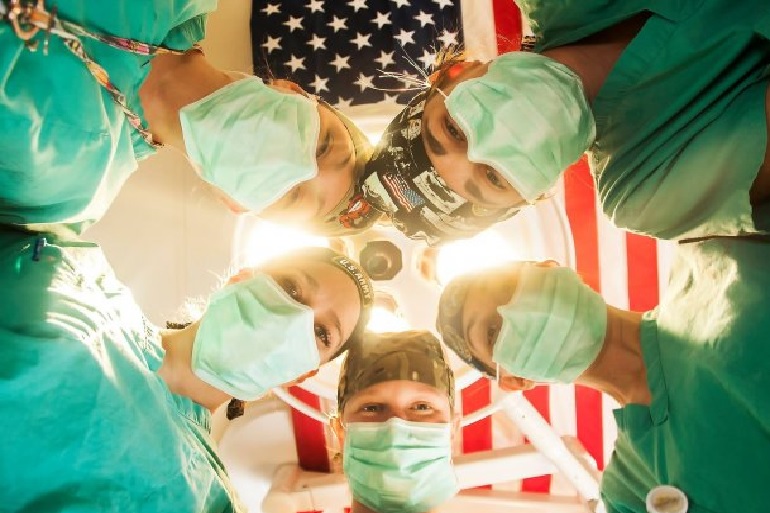
WASHINGTON -- From advancements in battlefield care, to continued dominance in cybersecurity and a renewed emphasis on modernization, 2017 was a groundbreaking year for Army innovations in the medical, technological and cyber fields.
VIRTUAL HEALTH
It's 3 a.m., and the U.S. Army physician assistant stationed in rural Africa is jolted awake by a radio call. The field medics are bringing in a Soldier who was critically wounded by a gunshot that damaged the femoral artery. As the team prepares for the procedure, the physician assistant contacts the on-call trauma surgeon -- who is more than 3,000 miles away.
Read the Article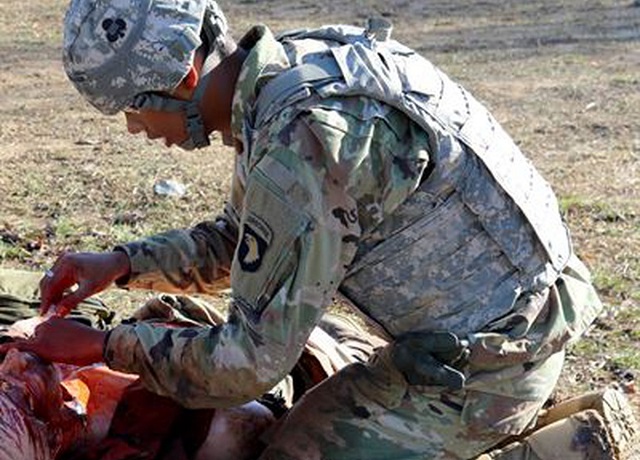
When bullets are flying and a service member needs treatment, a combat medic can’t be worried about taking notes.
But knowing what happened and how a patient was treated helps their future treatment, and it can assist wounded warriors when claiming disability.
Read the Article
Cutting edge technology sponsored by the Office of Naval Research may one day enable the Marine Corps to resupply combat-deployed troops via unmanned aerial vehicles, officials announced.
A successful final helicopter flight demonstration was achieved here Dec. 12 with autonomous capability as part of the Autonomous Aerial Cargo/Utility System program. AACUS is a partnership between ONR and technology company Aurora Flight Sciences.
Read the Article
A telemedicine platform that helps emergency departments triage patients just might be the answer to crowded ERs and physician staffing issues.
Read the Article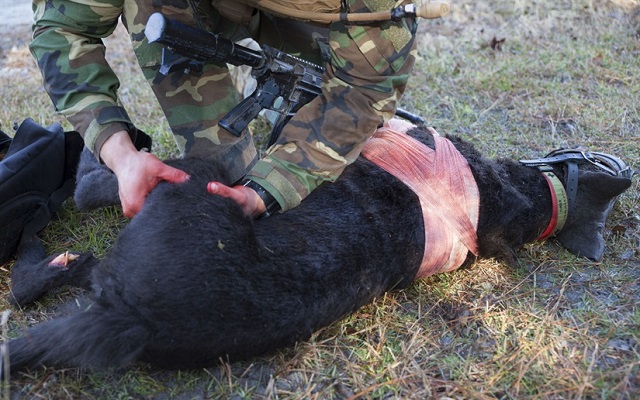
Multipurpose canine handlers with U.S. Marine Corps Forces, Special Operations Command, used a robotic canine training mannequin for the first time during hands-on medical training at Stone Bay here between Nov. 30 and Dec. 1.
Read the Article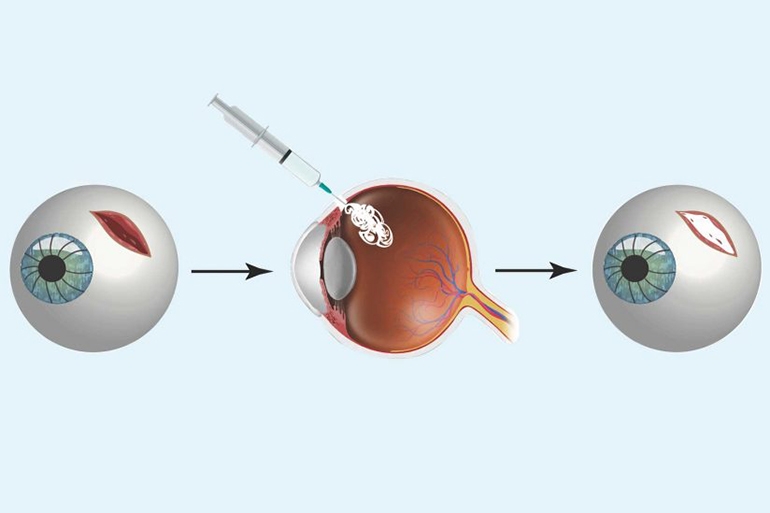
According to statistics, war-related eye injuries have steadily increased from a fraction of a percent to as high as 10 to 15 percent in the past few decades. Many of these injuries lead to permanent vision loss due to a lack of nearby medical facilities or the proper tools to treat them.
Read the Article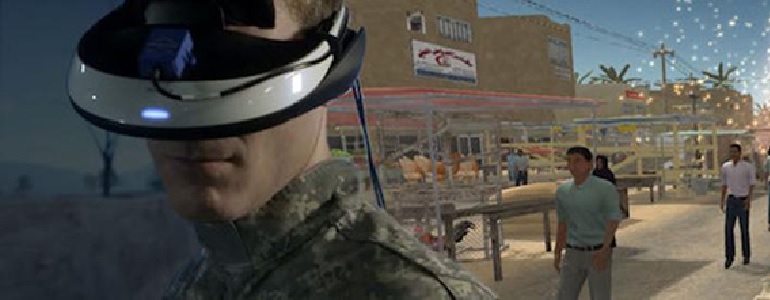
While PTSD is a significant issue for many of those serving in the military and others who work in traumatic situations, it also affects huge numbers of ordinary people who experience traumatic events such as assaults or natural disasters. Nearly 24 million Americans suffer from PTSD at any given time, and women are twice as likely as men to develop the condition. PTSD can sometimes be overlooked and is reportedly underdiagnosed, but anxiety disorders still cost society approximately $40 billion per year in treatment costs and loss of productivity.
Read the Article
Apple has now officially launched its previously announced Apple Heart Study with the release of the Heart Study app. In partnership with Stanford University, the Apple Heart Study aims to see if the Apple Watch can accurately identify arrhythmias with its heart rate tracking technology and notify users of possible atrial fibrillation.
Read the ArticleNovember 2017
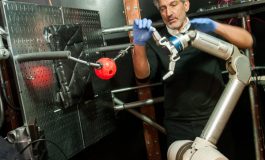
Scientists at the University of Chicago have shown that it is possible to implant brain-computer interfaces and let amputees control robotic arms, even years after their amputations. Similar research has previously focused on paralyzed people and whether they can benefit from technology that lets them move external devices by simply willing and thinking of wanted movements. The new development extends a great deal of this research to amputees.
Read the Article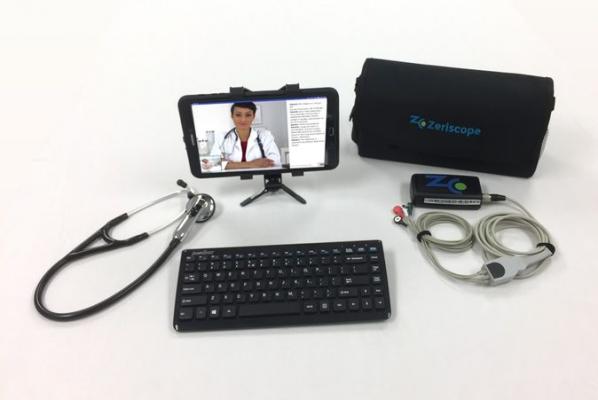
The U.S. Army has chosen Zeriscope, a provider of mobile telemedicine examination systems, to aid a study in mitigating the effects of Traumatic Brain Injury.
Under the one-year award, the South Carolina-headquartered company's real-time streaming telemedicine platform will be used with its integrated wearable sensor kit to monitor heart rate variability.
Read the Article
Army Medicine continues to lead the way in the development and implementation of medical innovations that improve the medical readiness of the Total Force and support the Army Chief of Staff's number one mission - Readiness.
Read the Article
If you have worked in government service or the military for any length of time, you know that the types of people you encounter are incredibly diverse; however, there is always that one individual. The one who can make anything happen. The one who has such a can-do attitude that no project is impossible when it's in their hands.
Read the Article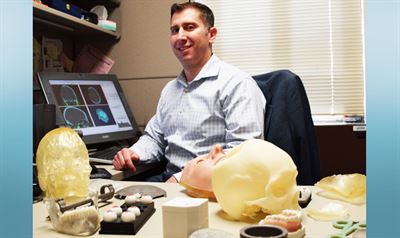
One wounded warrior wanted to amble around the hotel pool during his honeymoon without strapping on prosthetic legs. Another wanted ice skates to fit snugly onto his prosthetic feet so he’d receive the sensory feedback he’d come to expect when engaging in his favorite pastime.
Read the Article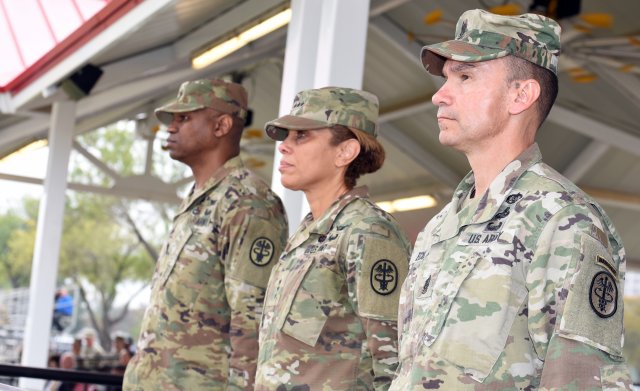
Lt. Gen. Nadja Y. West, the U.S. Army Surgeon General and Commanding General, U.S. Army Medical Command presided over a change of responsibility ceremony for outgoing MEDCOM Command Sgt. Maj. Gerald C. Ecker and incoming Command Sgt. Maj. Michael L. Gragg, on Nov. 3, at MacArthur Parade Field, Joint Base San Antonio, Fort Sam Houston, Texas.
Read the Article
The House Veterans Affairs Committee passed a bill Thursday that supports a program introduced by VA Secretary David Shulkin, MD, to allow the agency’s medical providers to offer telemedicine services across state lines.
Read the ArticleOctober 2017

“All hands on deck,” said Joint Staff Surgeon, Rear Adm. Colin G. Chinn in his address at the Human Factors: How to Improve Combat Survivability forum in early April. At the time of his presentation, Chinn was Deputy ASD(HA) for R&D, walking a tightrope everyday in a balancing act of weighted responsibilities ranging from the oversight of supporting a $2 billion defense health program funding cutting-edge research, to prioritizing enterprise maintenance and keeping the lens focused on “Big ‘A'” acquisition processes.
Read the Article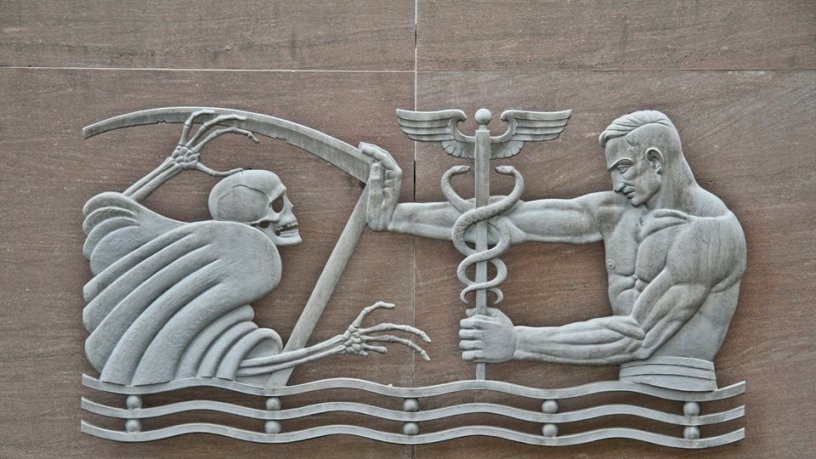
Andy Fisher is currently a second-year medical student at Texas A&M College of Medicine. He is probably like a lot of other medical students, studying hard and trying to grind his way through a grueling four years of intense academia. Unlike most other medical students, he served as a former physician assistant (PA) for the 75th Ranger Regiment and logged multiple combat deployments while on active duty.
Read the Article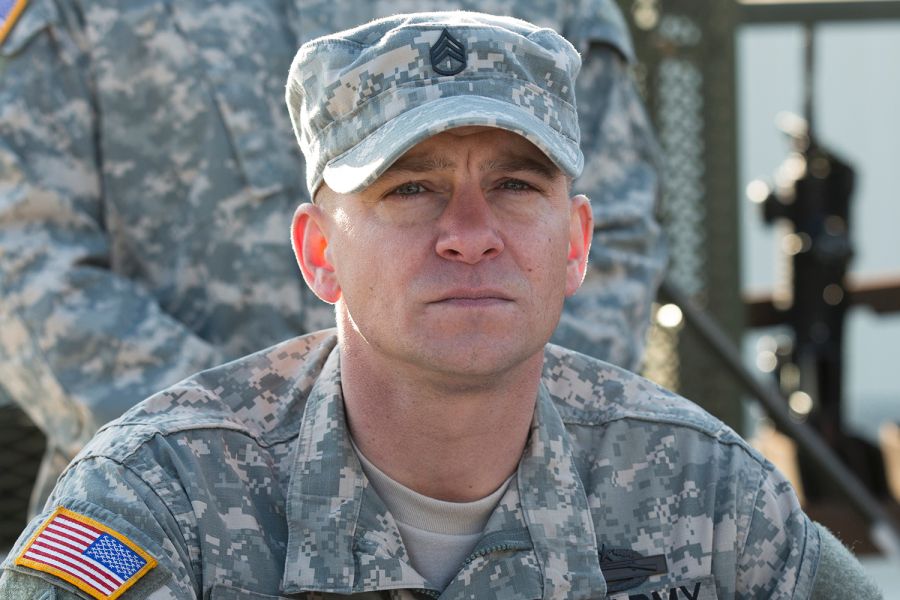
“Thank You For Your Service” — written and directed by “American Sniper” screenwriter Jason Hall — depicts Schumann (played by Miles Teller) and other, real-life soldiers with the 1st Infantry Division. The movie, opening Friday, portrays their struggles with traumatic brain injury, post-traumatic stress disorder, depression and suicidal thoughts following their return from Iraq to Fort Riley, Kan.
Read the Article
Renata Lukezic, General Pediatrician at the Vilseck Army Health Clinic, conducted her first Telehealth to the Home appointment in September which launched the Medical Department Activity Bavaria Telehealth to the Home pilot program.
Lukezic is the first MEDDAC-B provider to conduct a follow-up appointment utilizing virtual technology to connect to the family in their home.
Read the Article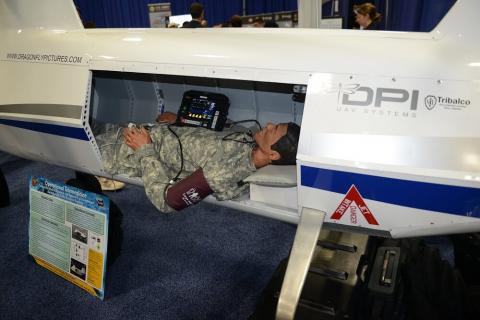
The US Army reports that researchers at its Telemedicine and Advanced Technology Research Center (TATRC) at Fort Detrick, Maryland, are using the DP-14 ‘Heavy Fuel Tandem Helicopter’ as a test bed to develop the concepts that may one day be used to provide medical supply delivery and medical evacuation capabilities using an unmanned aerial system. The service said it is looking at using unmanned systems as a possible ‘plan B’ for when the ideal solution (a fully-equipped medical evacuation aircraft with a trained crew and pilot) isn't possible.
Read the Article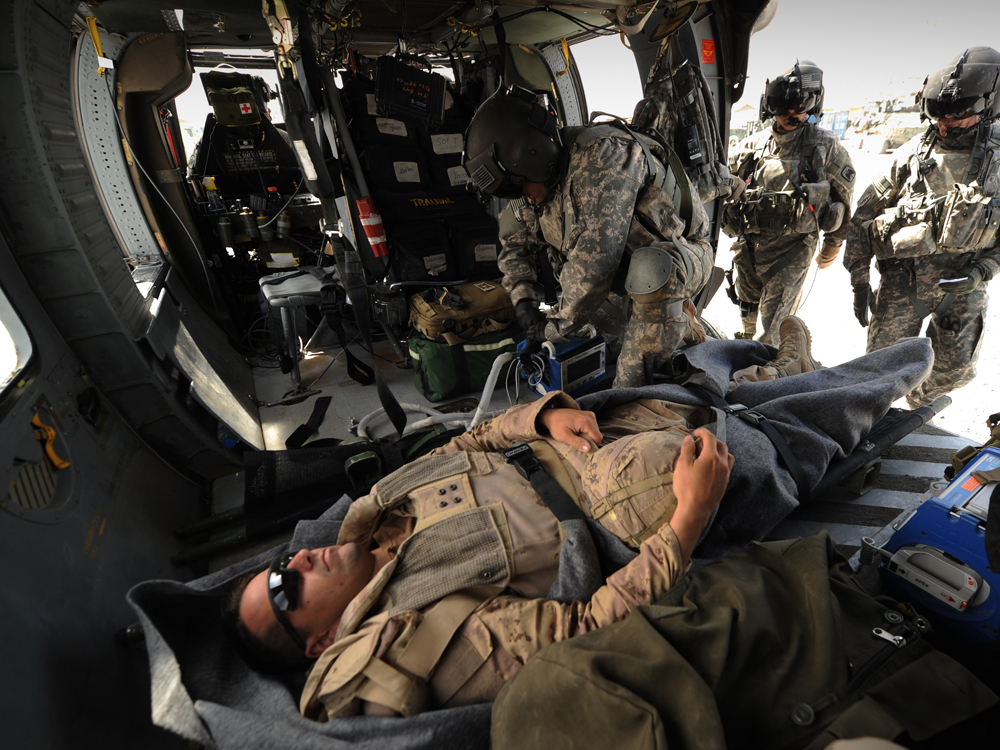
'The first time a medic gets blood on their hands and tries a life-saving procedure should not be on a fellow soldier with their friends looking on.'
Faced with pressure from animal-rights groups, every hospital in Canada and most in the United States have stopped doing it, as have many of the armed forces around the world.
Read the Article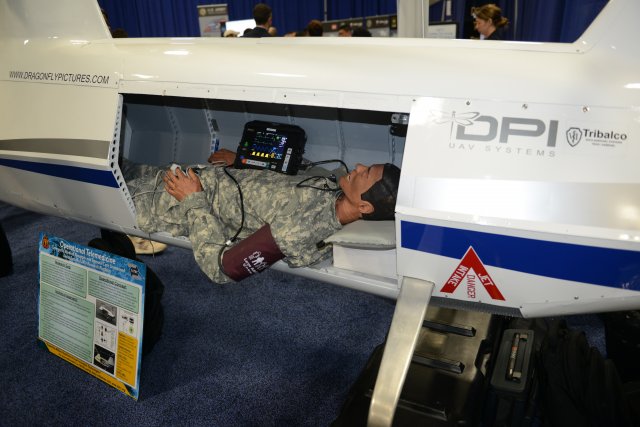
Although a fully-equipped medical evacuation aircraft with a trained crew and pilot will likely always be the best option to get a wounded Soldier off the battlefield, the Army is looking at unmanned aerial systems as a possible "plan B" for when that ideal isn't possible.
Read the Article
Rear Adm. Mary Riggs, commander of the U.S. Navy‘s Reserve Component Expeditionary Medicine, has been assigned as director of research and development at the Defense Health Agency.
Riggs previously served as deputy director of the military branch’s Nurse Corps and reserve policy and integration office; deputy chief of staff at the Reserve Navy Medicine Education and Training Command; and commanding officer of the Operational Health Support Unit-Portsmouth.
Read the Article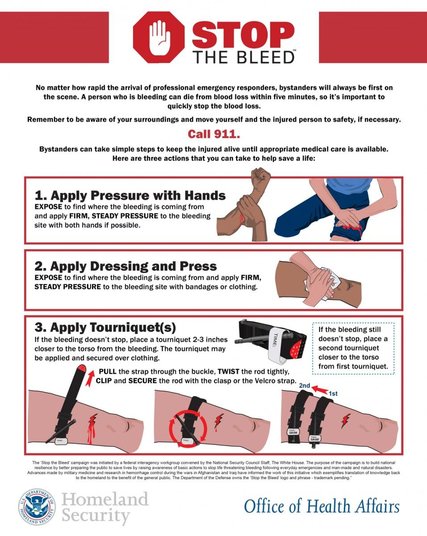
In the commotion immediately after the Las Vegas shooting that killed nearly 60 people on Sunday, medical workers outnumbered by victims pressed bystanders into service to help with emergency first aid.
Read the ArticleSeptember 2017
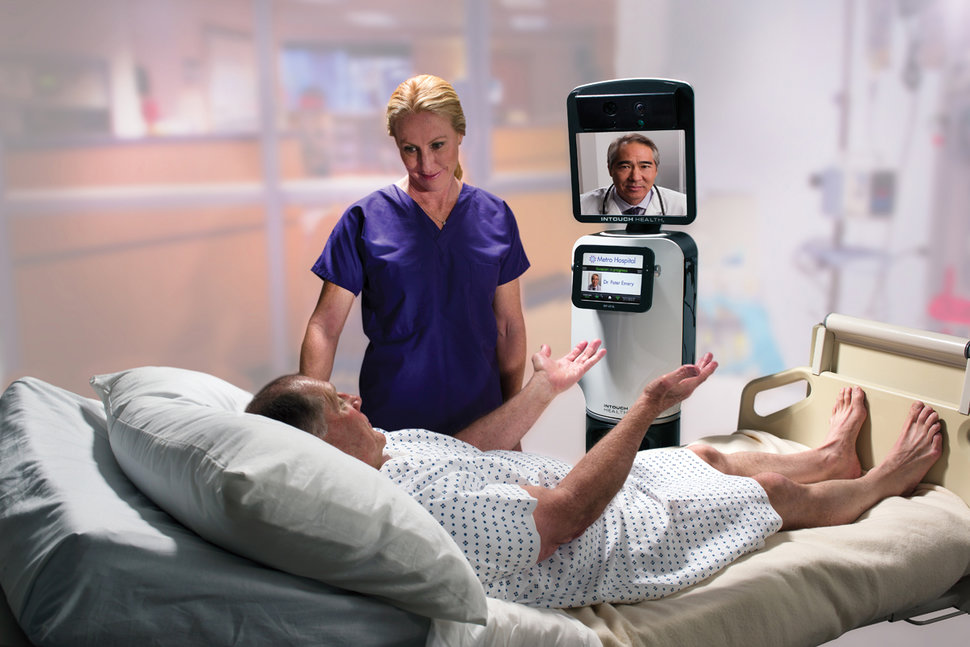
Too busy for an office appointment? No transportation to get to the doctor's office? Maybe it's time to try the newest trend in health care: videoconferencing with a doctor.
We trust our computers, tablets and smartphones for everything else, so why not health care? Connecting by videoconference allows a doctor to visually assess your condition and talk through treatment options. For example, telehealth appointments can be helpful for skin rashes, a stuffy nose or an earache.
Read the Article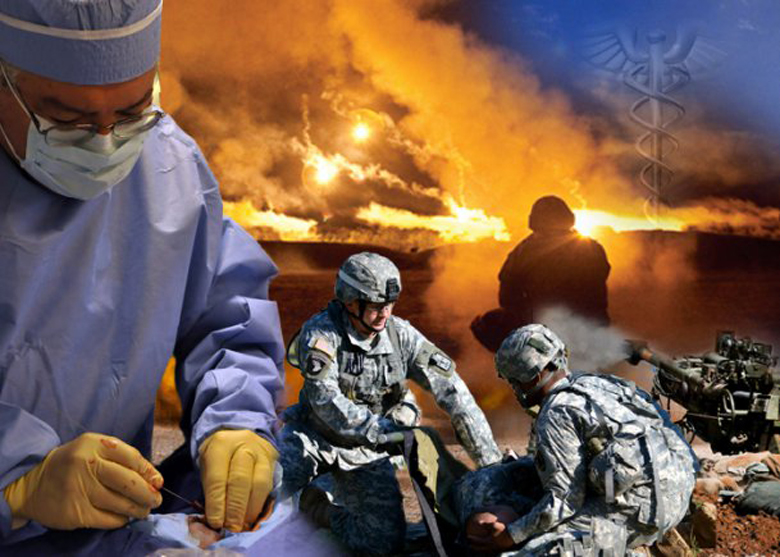
Army Medicine (AMEDD) is comprised of a committed team of more than 140,000 professionals, who provide a continuum of integrated health services, research, training and education that supports approximately 3.8 million beneficiaries. When assessed against nationally accepted quality benchmarks for healthcare, AMEDD performance meets or exceeds the Nation’s top-performing civilian systems while sustaining readiness and engaging in operational missions across the globe. To remain successful in this environment, and face future challenges, Army Medicine looks for ways to innovate.
Read the Article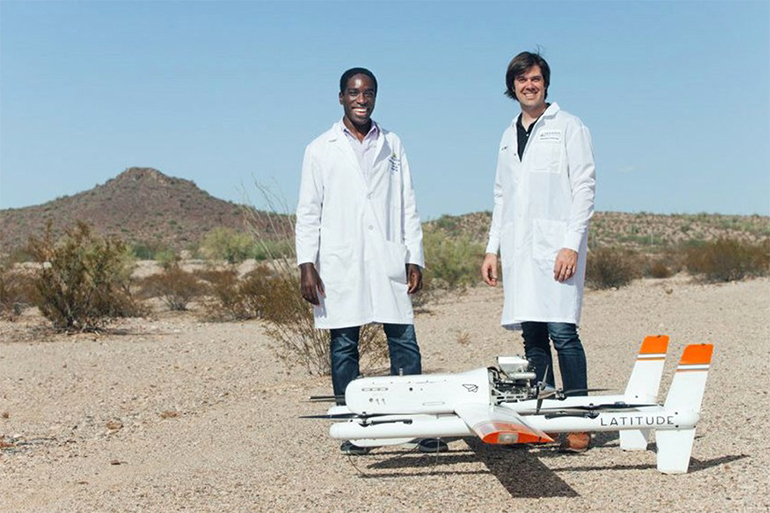
The last few weeks have been full of natural disasters striking Mexico, islands in the Caribbean, and the United States mainland. Roads are damaged and entire communities have been cut off from help for days at a time, while the potential for infectious diseases to thrive has skyrocketed. Moreover, patients often end up without their prescription medication and some meds that require refrigeration go bad. In many cases, as with people on insulin, this can be a life threatening problem.
Read the Article
When people without health insurance experience suspicious symptoms, they often rely on an internet search to decide whether the situation is dire enough to warrant a trip to the emergency room.
However, by the time they seek help, the condition may have advanced to the point where care is complicated and expensive.
Read the Article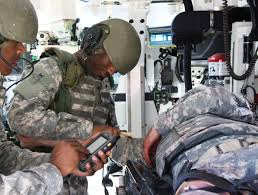
Are you interested in communicating with your health care team?
Now you can with TRICARE Online Patient Portal Secure Messaging, also known as RelayHealth.
Read the Article
There are two hot concepts in unmanned vehicles: Swarms of drones operating as a coordinated pack, and robots evacuating casualties,
Put them together, and you have an Army idea for teams of robots evacuating battlefield casualties.
Read the ArticleAugust 2017

Nanomachines which can drill into cancer cells, killing them in just 60 seconds, have been developed by scientists.
The tiny spinning molecules are driven by light, and spin so quickly that they can burrow their way through cell linings when activated.
Read the Article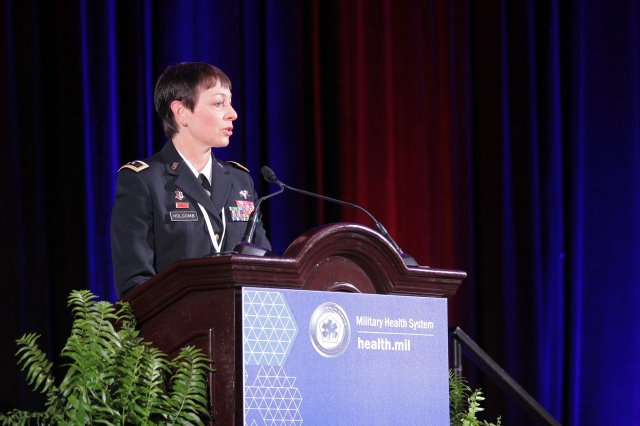
"The battlefield of the future is already here," said Maj. Gen. Barbara R. Holcomb during her keynote speech at the 2017 Military Health System Research Symposium Aug. 28 in Kissimmee, Florida. "And so as a result, the medical force of the future must be here as well."
As the Commanding General of the U.S. Army Medical Research and Materiel Command and Fort Detrick, Maryland, Holcomb highlighted prolonged field care, which military leadership designated in a Capabilities Needs Analysis as the number one capability gap across the Army.
Read the Article
A year after the NFL pledged $100 million in support of independent medical research and engineering advancements, a huge chunk of that soon will be awarded to such research, primarily dedicated to neuroscience.
A Scientific Advisory Board assembled by the NFL is set to launch its program to solicit and evaluate research proposals for funding.
Read the Article
U.S. soldiers stationed in Eastern Europe may access providers of their choice from Landstuhl (Germany) Regional Medical Center, thanks to a remote platform called "Telehealth in a Bag."
Read the Article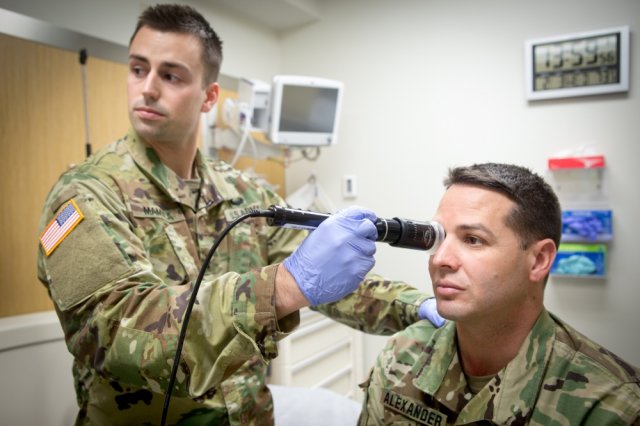
Regionally Aligned Forces stationed in Eastern Europe in support of Atlantic Resolve have virtual access to health care from their Garrison provider or specialists at Landstuhl Regional Medical Center in Germany, thanks to the Regional Health Command Europe TeleHealth In A Bag platform.
Read the Article
The human brain is remarkably efficient. Using a few dozen watts of energy, it performs information-processing functions that would take a conventional computer millions of watts to replicate. But a new Defense Department-funded IBM computer chip could enable machines to start catching up.
Read the Article
As you might have noticed from his professional information, Dr. George Ludwig has received numerous awards and commendations in his 23-year career. Which does he find the most meaningful? A letter of appreciation from the government of Zaire (now the Democratic Republic of the Congo), thanking him for his work to contain an Ebola outbreak in the early 1990s.
Read the Article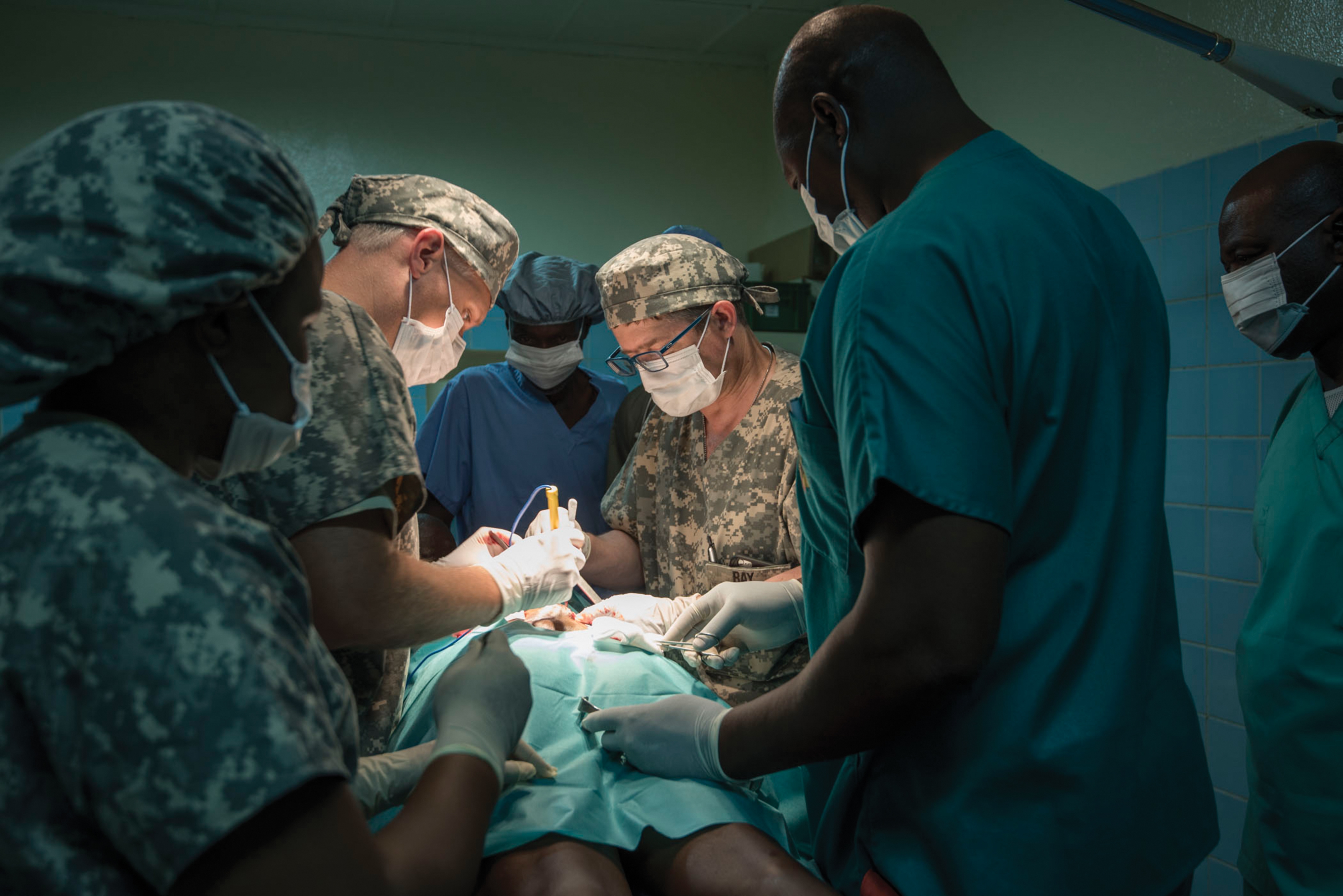
A quiet revolution is underway in Army medicine that could have a lasting impact on patients and providers. The protagonist behind the transformation is an insider, the 44th surgeon general of the Army who is changing how, when and where health care is delivered.
Read the Article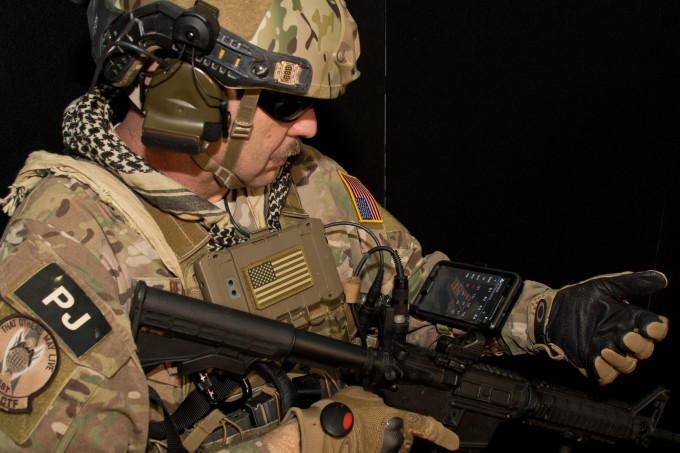
The U.S. Air Force has developed a new electronic patient monitoring tool that runs on mobile devices, enabling medics to treat battlefield casualties by pulling patients’ health status information from sensors and providing medics with critical data in real time.
Read the Article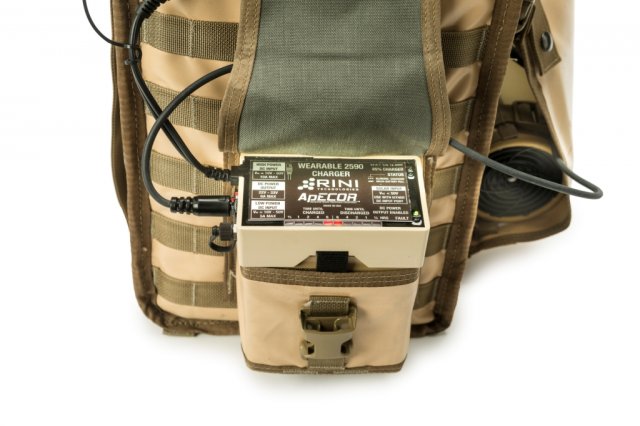
It's known as the "golden hour," and it refers to the precious 60 minutes following a battlefield wound when proper medical treatment can be crucial to a Soldier's survival.
Read the Article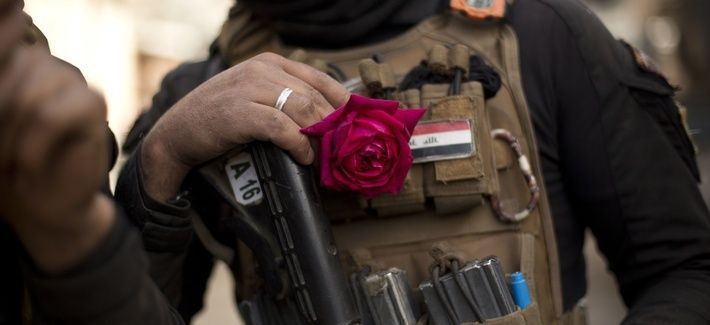
What’s almost as tough as Kevlar, as flexible as silk, has the DNA of a spider but comes from a worm? Something the Army is looking to buy for as much as $1 million.
Read the ArticleJuly 2017

Summer is a great time to start healthy new habits and break the old.
Improve your health with steps so simple you'll barely notice the effort.
Read the Article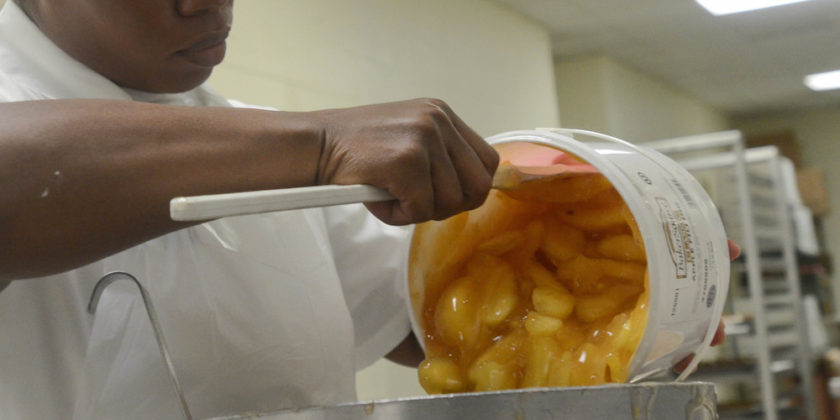
The U.S. Army is bulking up — just not in the way it probably intended.
In October 2016, a Department of Defense study revealed that the Army was the fattest of all the service branches, with 10.5% of soldiers classified as overweight based on body mass index. But less than a year later, the problem appears to have worsened: At the 2017 Medical Symposium on June 24, the Army Surgeon General’s Office presented data indicating that a full 13% of soldiers are now overweight.
Read the Article
The Army has more obese Soldiers than ever before, and to address the problem, senior Army leaders discussed a holistic approach that includes vegan options at dining facilities and box breakfasts at fitness centers.
Read the Article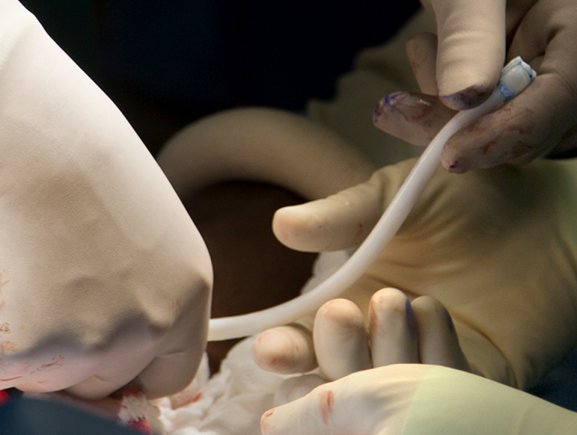
The Tissue Injury and Regenerative Medicine Project Management Office of the U.S. Army Medical Materiel Development Activity is working with industry partners to realize an organic, "human" product that will afford a more permanent solution for the repair of damaged vessels after traumatic injury on the battlefield.
Read the Article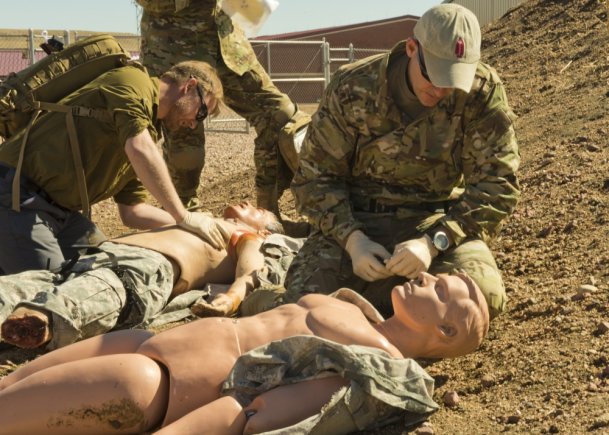
When Lt. Gen. Sean B. MacFarland left Afghanistan in 2013, he said he remembers troops there had an expectation that medevac helicopters would evacuate the wounded within the so-called "golden hour" -- a time period identified by medical professionals as the hour after an injury during which prompt treatment by doctors can often mean the difference between life and death.
Read the Article
Joseph Caravalho Jr., MD, Selected as New Henry M. Jackson Foundation for the Advancement of Military Medicine President, CEO - Army Major General (Dr.) Joseph Caravalho, Jr., a 1983 graduate of the F. Edward Hebert School of Medicine ("America's Medical School"), Uniformed Services University of the Health Sciences (USU), was selected as the next president and chief executive officer of HJF, effective September 1, according to an announcement today by Mr. Philip Odeen, chair of the Henry M. Jackson Foundation for the Advancement of Military Medicine (HJF) Council of Directors. Caravalho is currently the Joint Staff Surgeon at the Pentagon and chief medical adviser to the Chairman of the Joint Chiefs of Staff, providing recommendations to the Chairman, the Joint Staff and Combatant Commanders on a wide range of medical and readiness issues.
Read the Article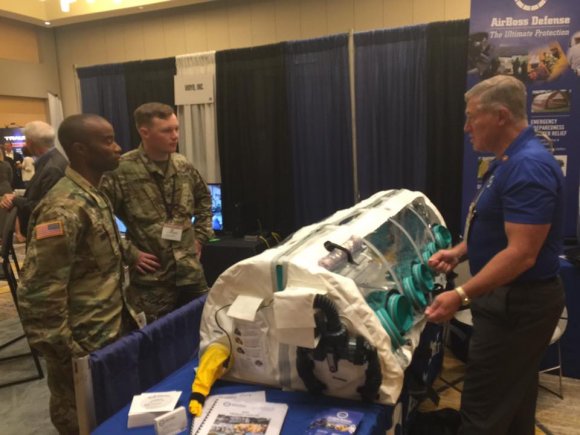
The Association of the United States Army Institute of Land Warfare hosted the 2017 Army Medical Symposium and Exposition at the Grand Hyatt Hotel in San Antonio, Texas, on July 24-25 to discuss the history of Army medical innovation and the future of Army Medicine in multi-domain battle.
Read the Article
Army Surgeon General Lt. Gen. Nadja Y. West opened the two-day Association of the U.S. Army Medical Symposium and Exposition in San Antonio with a reminder that there is only one reason Army medicine exists: warfighters.
Lauding the rapid and continued improvements the Army has made in health care delivery and research, West said the Army may have one of the world's best medical organizations but it has a single purpose. "We are a great health organization but we are Army medicine," she said. "Nobody else can provide the size, the scope, the scale and the speed."
Read the Article
This week, the Army Medical Department will mark its 242nd anniversary. The AMEDD has a proud history that dates to July 27, 1775, when the Continental Congress authorized a Medical Department Service for an Army of 20,000 men. Since that time, countless military members, civilians and contractors have provided health care on and off the battlefield.
Read the Article
Gary Gilbert leads the USAMRMC Telemedicine & Advanced Technologies Research Canter (TATRC) Medical Intelligent Systems Laboratory. Composed of a robust group of research scientists and technologists in the fields of artificial intelligence, robotics, engineering, computer science, telecommunications as well as experienced research managers and field operators in combat health services support and force health protection, this lab is focused on engineering the future of military operational medicine in the Multi Domain Battlespace.
Read the Article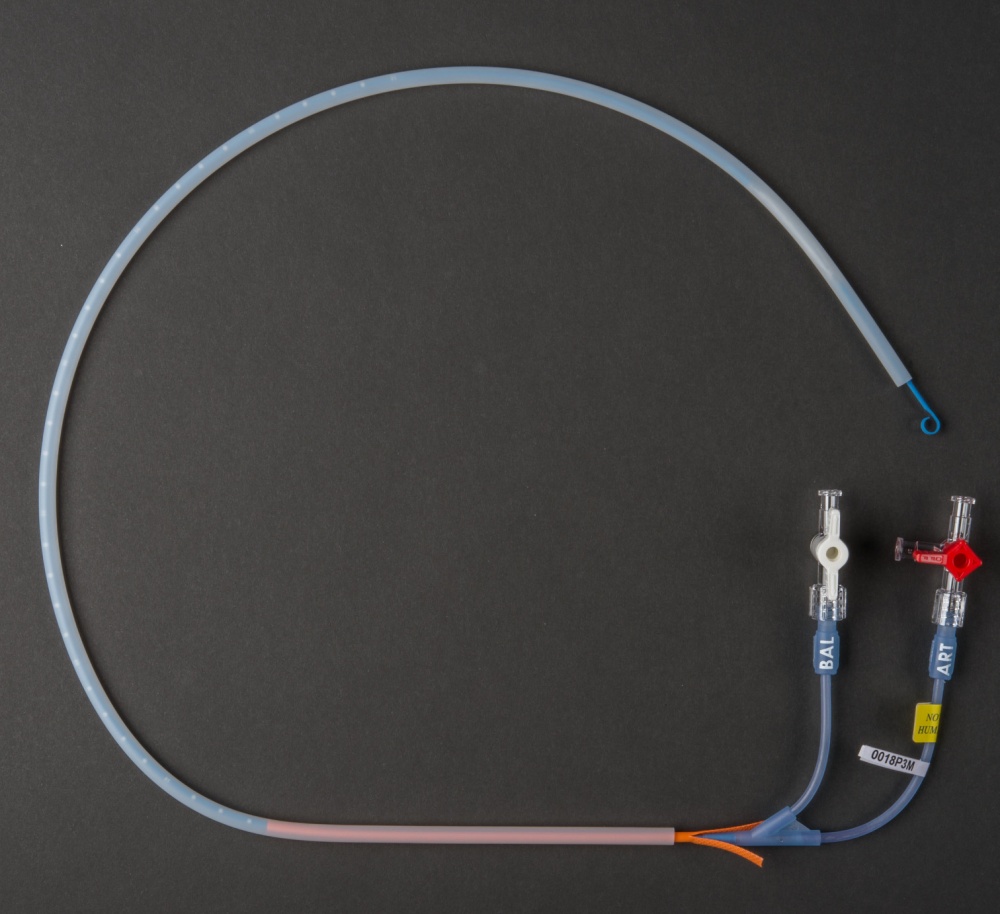
During the episode "The Fog of War" of the CBS drama series Code Black, two characters quickly decided to use a "balloon-tipped catheter" for "REBOA" to save a patient. The concept: a balloon that temporarily stops major bleeding in the aorta of the heart. It's a device that can save lives and it's a story that started with the American military. The U.S. Army Medical Research and Materiel Command's Combat Casualty Care Research Program (CCCRP) and Code Black's head writer-executive producer were even in touch about the episode's accuracy, which turned into a mutually-beneficial partnership.
Read the Article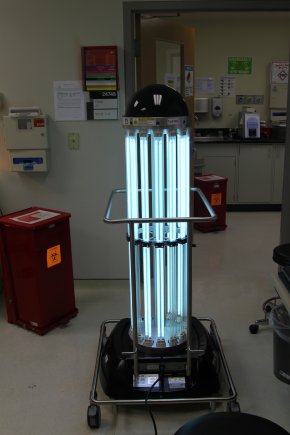
The Brian Allgood Army Community Hospital has invested in a safer solution to address and combat infections giving patients peace of mind by acquiring "Trudi," a 5-foot-5 germ killing robot.
Read the Article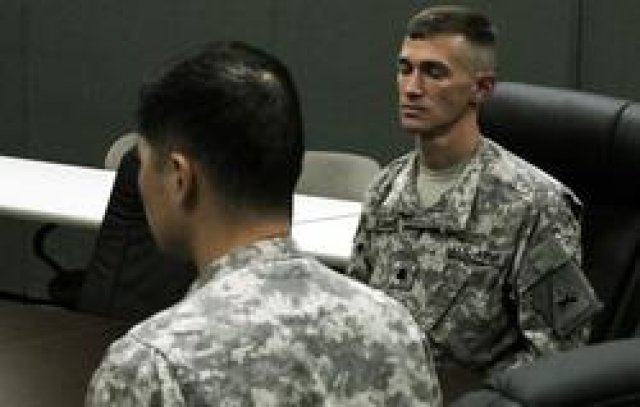
Over the past decade, a technique called mindfulness has been showing significant promise in helping to sharpen skills like attention, memory, listening, emotional resilience, leadership and job performance. In 2015, a University of Miami-led research study funded by the U.S. Army Medical Research and Materiel Command, and led by Dr. Amishi Jha, principal investigator and neuroscientist, showed that mindfulness meditation exercises positively support active-duty Soldiers in protecting and training their minds to stay focused and better prepare them for high-stress combat situations, while also improving overall cognitive resilience and performance.
Read the Article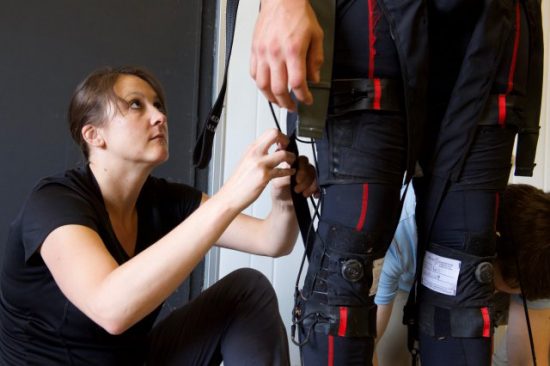
Thanks to a new "suit" being developed by the Department of Defense-funded Warrior Web program, future Soldiers will be able to march longer, carry heavier gear and improve mental sharpness. The project, funded by the Defense Advanced Research Projects Agency, or DARPA, has many partner organizations across the DOD and academia. The U.S. Army Natick Soldier Research, Development and Engineering Center, the Maneuver Center of Excellence, the Army Capabilities Integration Center and the Military Operational Medicine Research Program met at ARL's SPEAR in June for a soft "exosuit" demonstration and to discuss the path forward for the Army's Warrior Web Program.
Read the Article
The museum has remained a hub of medical research throughout its history. As curator from 1893 to 1902, Army Maj. Walter Reed completed pioneering work on infectious diseases such as typhoid fever and yellow fever. In 1946, the museum became a branch of the Army Institute of Pathology, before being renamed the Armed Forces Medical Museum in 1974, and becoming the NMHM in 1989. It now occupies a sleek, modernist building that opened in 2011 near the Walter Reed Army Institute of Research.
Read the Article
In recognition of his outstanding efforts regarding the practice of hyperbaric medicine as a treatment for traumatic brain injury, U.S. Navy Capt. Brett Hart was selected as recipient of the 2017 Excellence in Hyperbaric Medicine Award, presented by the Undersea and Hyperbaric Medical Society, Naples, Florida. Hart currently serves as director of the Hyperbaric Oxygen Treatment (HBO2) Traumatic Brain Injury Research Program of the U.S. Army Medical Materiel Development Activity, Fort Detrick, Maryland.
Read the Article
The Armed Forces incorporate physical activity into everyday life. All military members are held to a standard that is assessed by a mandatory fitness test. Integrated into these standards is a portion that tests a member's aerobic fitness and muscular endurance.
Read the Article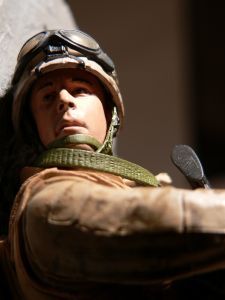
Tens of thousands of Fort Bliss soldiers have deployed to the Middle East over the past decade and many are still deploying.
It's estimated between 10 to 25 percent of them return with some form of Post Traumatic Stress Disorder. A lot has been learned about treating soldiers for PTSD since the war began. Read the Article
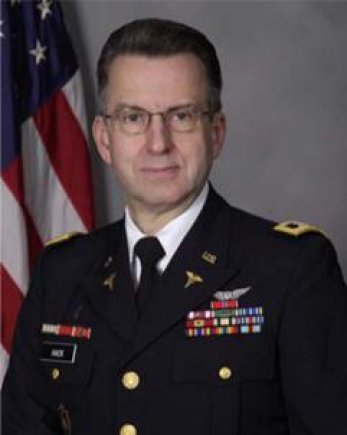
Ace Laboratories, Inc. today announced that Colonel Dallas Hack (Ret.), MD, MPH will join the company in a co-appointment as its Medical Director and member of the Scientific Advisory Board. In addition, Army Reservist Lt. Colonel William Killgore, PhD. has also been appointed to the Scientific Advisory Board. Both are innovators in advancing the understanding and treatment of Traumatic Brain Injury (TBI). Dr. Hack's distinguished military medical career included Army command surgeon advancing to faculty Instructor at the US Army War College in Carlisle, Pennsylvania. He was promoted to the Director of the US Army Combat Casualty Care Research Program and the Chair, Joint Program Committee 6 (Combat Casualty Care). Dr. Hack also served as the Senior Medical Advisor to the Principal Assistant, Research and Technology, US Army Medical Research and Materiel Command (USAMRMC) from 2014 to 2015. His military honors include the Bronze Star, two Legions of Merit, and seven Meritorious Service Medals.
Read the Article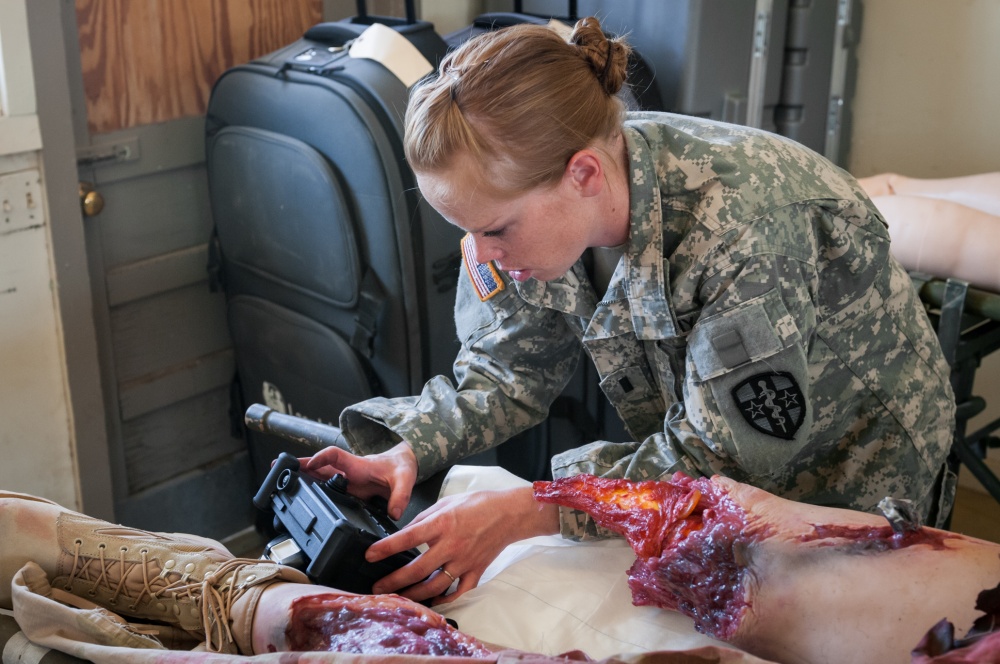
On this day, Milligan, a nurse out of Fort Harrison, Montana, does make-up effects on training mannequins, as well as flesh-and- blood volunteers to better simulate mass trauma events. Playing with dolls and painting may sound fun, but this is serious work. “Here, I’ve been able to take my nursing knowledge and apply it to the wounds that I’ve been helping create,” said Milligan, who is out of the 7407th Troop Medical Clinic out of Helena, Montana.
As a member of the Effects and Enablers Team, (which is augmenting the 84th Training Command Combat Support Training Exercise and the Army Medical Command’s Global Medic Exercise headquartered at Fort Hunter Liggett, California), Milligan acts as a moulage and make-up artist, creating more realistic training for medical professionals throughout July’s Global Medic exercise at various locations throughout central California, as well as Fort McCoy, Wisconsin. For those they support at the Combat Support Hospital on Camp Roberts, California, this is training. For Milligan and her team, this is the real deal and the best way to promote a train-as-you-fight environment.
Read the Article
Naval Hospital Oak Harbor in Washington State has transitioned to the MHS GENESIS electronic health record from Cerner, the U.S. Department of Defense announced today.
Oak Harbor is the second site to come online as part of the Department of Defense’s initial operating capability program, and the go-live marks a significant milestone as the inpatient components of MHS GENESIS are now officially deployed, wrote Travis Dalton, senior vice president at Cerner, in a Cerner blog post. The first Cerner deployment occurred in February at a clinic at Fairchild Air Force Base.
Read the Article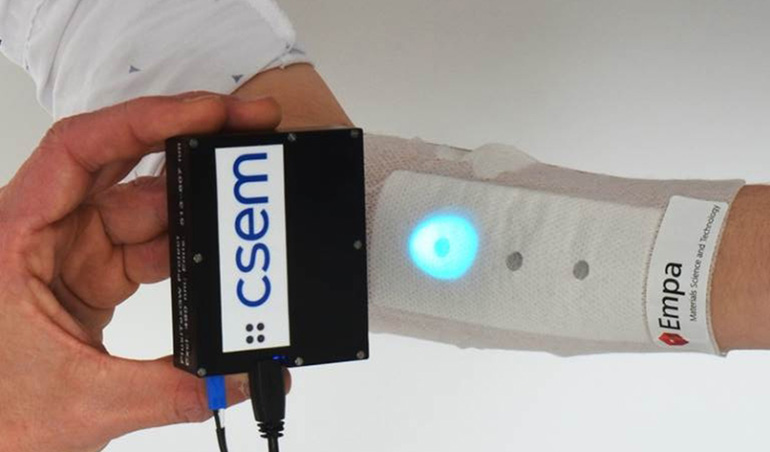
Bandages used to treat chronic wounds present a host of challenges, particularly when they’re removed to examine and clean a wound. While this is necessary, the process can be very painful for the patient, difficult on the clinician, and the wound may become infected due to being exposed. A team of researchers from Swiss Federal Laboratories for Materials Science and Technology (Empa), ETH Zurich, Centre Suisse d’Electronique et de Microtechnique (CSEM), and University Hospital Zurich set out to create an electronic bandage that can give a glimpse of what’s happening underneath it. This would allow clinical staff to remove the bandage only when necessary, which would let wounds heal longer undisturbed without becoming infected.
Read the Article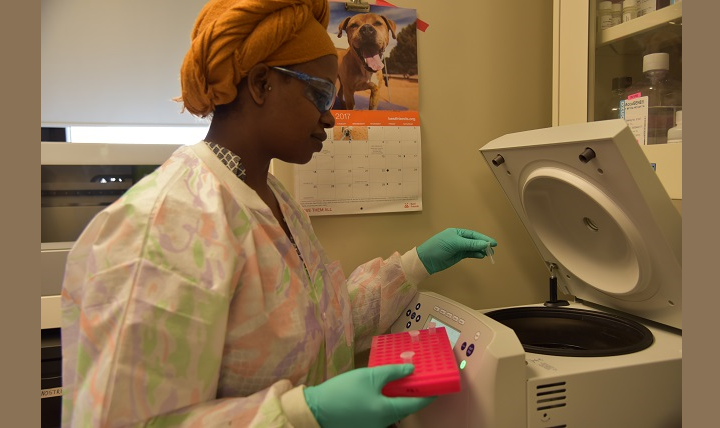
FORT DETRICK, Md. — Scientists at the U.S. Army Center for Environmental Health Research are hoping to determine how bones heal in microgravity, based on an experiment that launched to the International Space Station aboard SpaceX in February and returned to earth aboard SpaceX's Dragon cargo craft in March.
Read the ArticleJune 2017
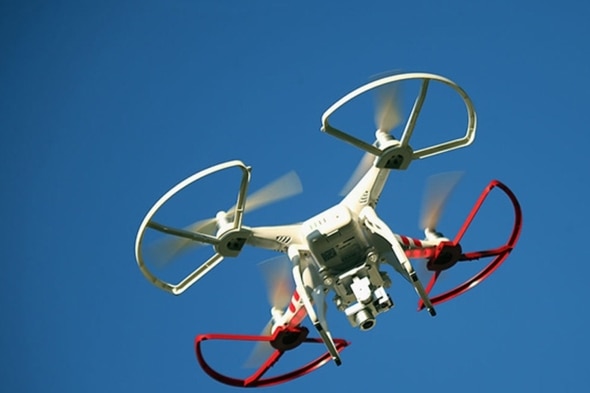
Drones have been used to deliver sunscreen to a conference in Palm Springs, Calif., and pizza to a family in New Zealand, but they’re also in the air for far more urgent purposes — such as saving lives.
Read the Article
An army hospital in Kentucky pursued telemedicine in order to reduce ER wait times and redirect non-urgent issues to a primary care provider instead of the ED.
Telemedicine is seen by many hospitals as a means of reducing stress on ED staff, hospital resources, and the delivery of specialized care whether it’s telepsychiatry, pediatric care, chronic care, or any other specific care.
Read the Article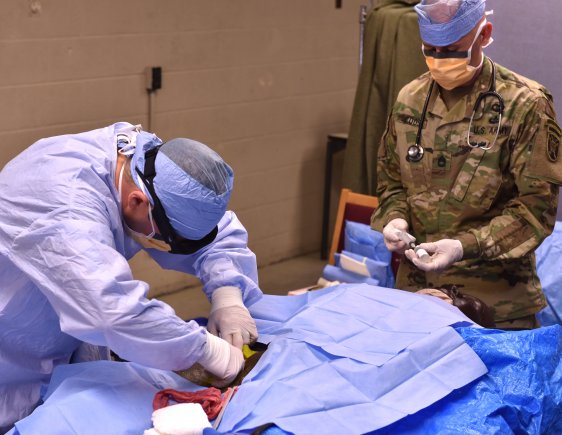
It's 3 a.m. and a physician assistant (PA) deployed to a remote location in Africa is sound asleep. All is quiet until an urgent radio call from a Special Forces medic out in the field breaks the silence. A Special Forces Soldier was wounded while conducting clearing operations in a nearby village, and a few of his comrades are transporting him to the PA's location.
Read the Article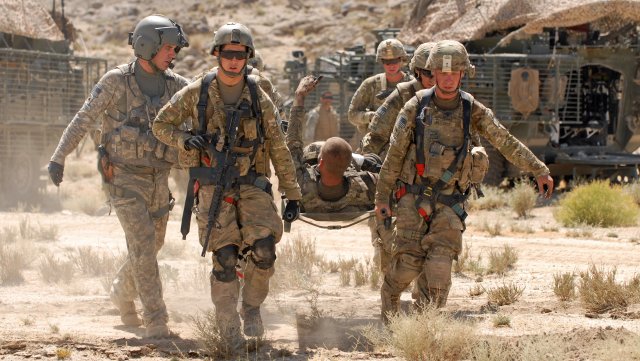
The U.S. Army Medical Materiel Agency, a subordinate organization of the U.S. Army Medical Research and Materiel Command, is supporting a pivotal clinical trial to test the safety and effectiveness of a self-expanding foam device to stop massive intracavitary abdominal bleeding.
Read the Article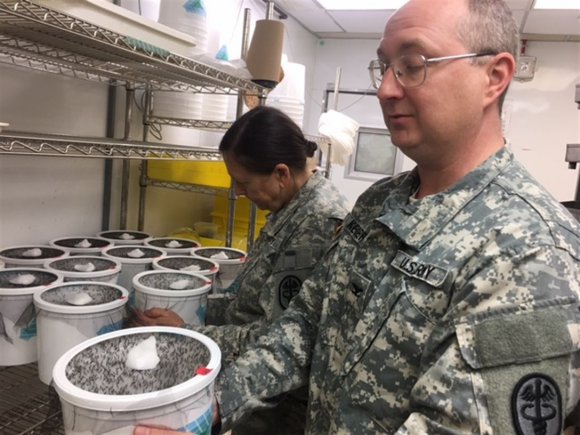
Americans rely on the U.S. military to keep them safe from human actors who would do them harm.
What Americans might not know is that some service members work around the clock to protect them from microscopic bad guys -- deadly viruses and bacteria.
Read the Article
Combat soldiers could one day take be taking their exploits to new heights – literally.
The FlyBoard Air, a hoverboard that can fly its operator in the sky at 10,000 feet — more than seven times the height of the Empire State Building, was recently on display at Lake Havasu in Arizona, where its creator, Franky Zapata, was seen flying it around over the course of several days.
Read the Article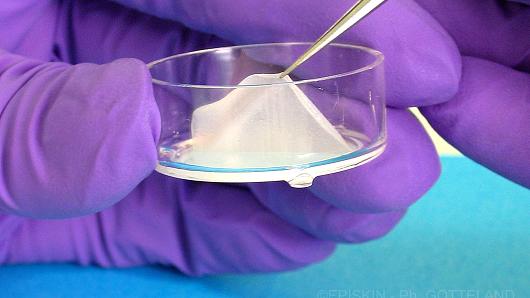
Growing human skin in a petri dish isn't the first thing that pops into your mind when you hear the name L'Oréal. Yet the French cosmetics giant, whose other brands include Lancôme, Maybelline New York, Ralph Lauren Fragrances and The Body Shop, also produces gelatinous, dime-sized blobs called EpiSkin.
Read the Article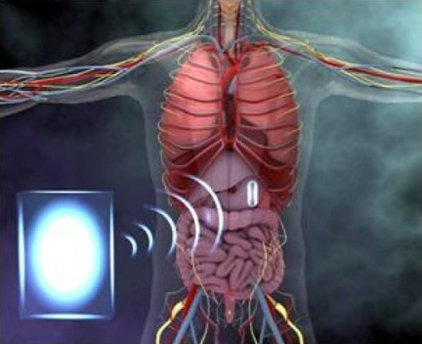
At last week's Pentagon Lab Day in Washington, DC, the Army's Communications-Electronics Research, Development and Engineering Center (CERDEC) and Army Research Lab demonstrated a prototype of technology straight out of first-person shooter games—an "augmented reality" heads-up display that could help soldiers tap into sensors and other data.
Read the Article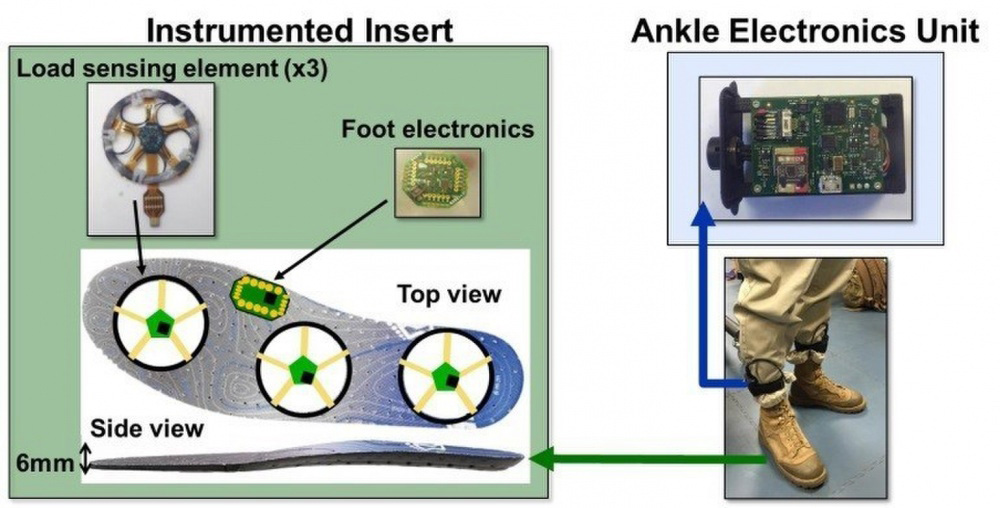
Marine Corps Systems Command's Marine Expeditionary Rifle Squad team has partnered with the Massachusetts Institute of Technology Lincoln Laboratory to create a boot insert prototype to help improve Marines' health and performance.
Read the Article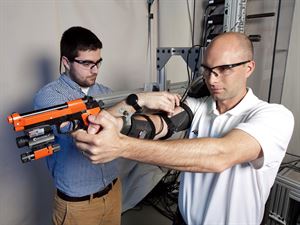
Basic research and science performed in the Defense Department laboratory enterprise sustains the U.S. military technological advantage and maintains long-term superiority in all warfighting domains, defense officials said here today. The Navy's high-speed experimental boat Stiletto pulls in to refuel before heading back out for evening observations. Navy photo The Navy's high-speed experimental boat Stiletto pulls in to refuel before heading back out for evening observations.
The Lab Day event showcased more than 80 exhibits of technical innovation developed by scientists and engineers who work in the defense laboratory enterprise's nationwide network of 63 defense labs, warfare centers and engineering centers.
Read the Article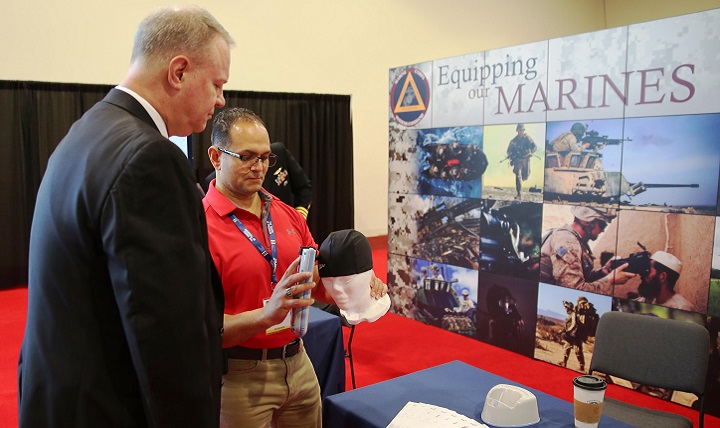
Marine Corps Systems Command is bringing innovative, life-saving and award-winning technology to Marines on the front line.
The Infrascanner is a portable, medical diagnostic device that provides early detection of intracranial hematomas – or bleeding within the skull – in the field, potentially saving lives and improving casualty care and recovery.
Read the Article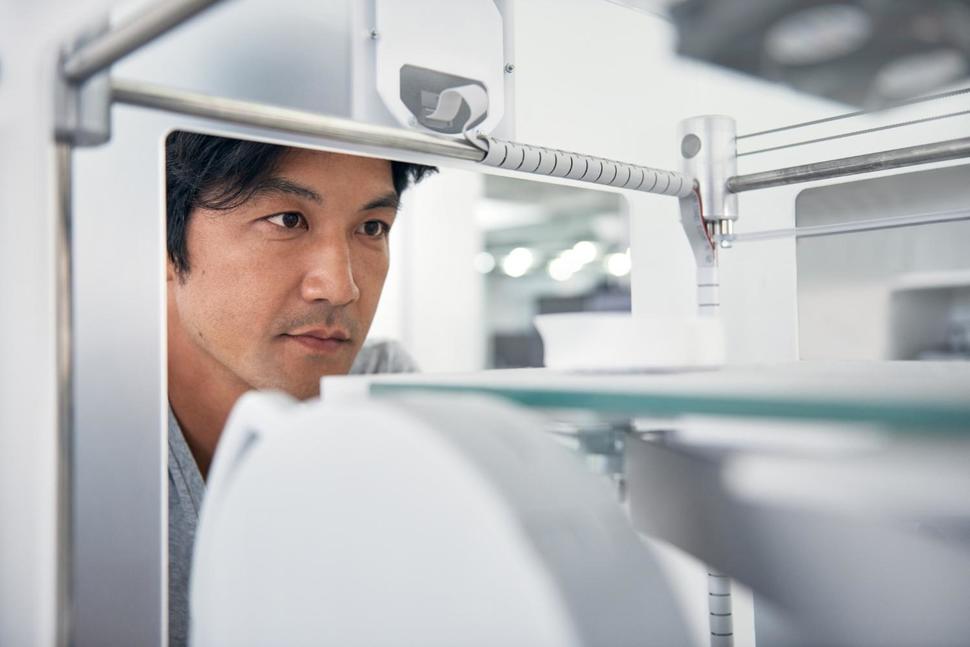
These days, 3-D printing can be used to make just about anything – from guns to eyeglasses.
In place of the ink used by their 2-D counterparts, 3-D printers take materials ranging from plastics and ceramics to metals and, layer by layer, create three-dimensional objects based on digital files.
Read the Article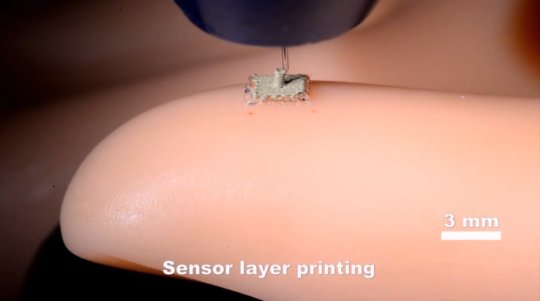
Engineering researchers have developed a revolutionary process for 3D printing stretchable electronic sensory devices that could give robots the ability to feel their environment. The discovery is also a major step forward in printing electronics on real human skin.
Read the Article
A collaboration of scientists from Brigham and Women’s Hospital, Massachusetts Institute of Technology, and Draper Laboratory, an engineering firm, have been working on a wireless system to power electronic implants placed within the gastrointestinal (GI) tract. Batteries are currently the only practical option for most implants, but their lifetime is limited and it is difficult to overcome the incompatibility of the mucosal lining with the batteries by encasing them somehow.
Read the Article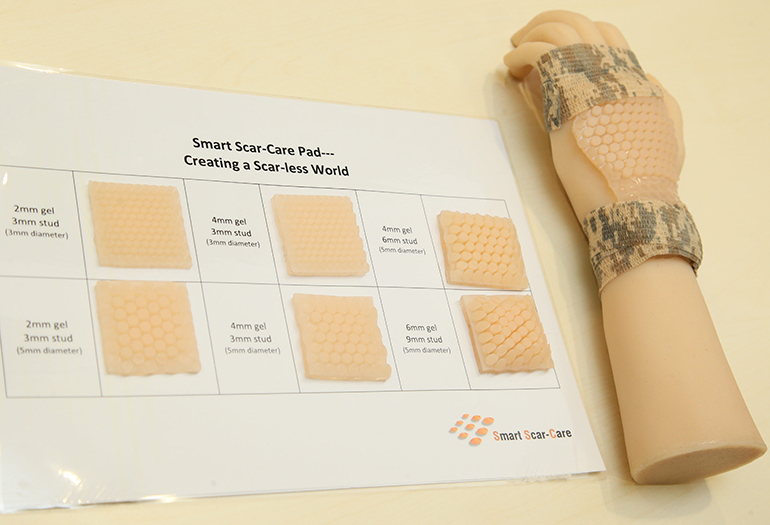
At the The Hong Kong Polytechnic University (PolyU) engineers have developed a innovative pad for treating hypertrophic scars and keloids. Such scars have a great deal of built-up collagen inside, forcing the scar to swell and protrude from the rest of the skin. Delivering pressure onto the scar via a pad helps it to heal better. Additionally, moisturizing the wound provides its own benefit. Existing methods offer either pressure or silicone gel for moisture, but the Smart Scar-Care Pad from PolyU does both at the same time.
Read the Article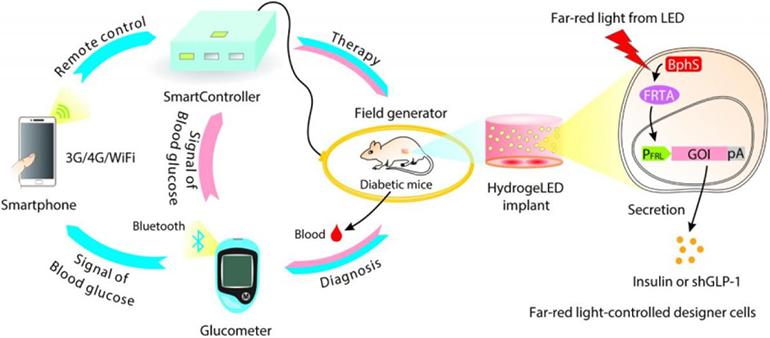
Scientists in China and Switzerland have developed hydrogel implants containing red light-emitting diodes (LEDs) and engineered cells that produce and release insulin in response to the far-red light emitted by the LEDs. The LEDs can be controlled wirelessly using a smartphone app, meaning that the scientists could control insulin levels in diabetic mice using the surgically implanted hydrogel capsules.
Read the ArticleApril 2017
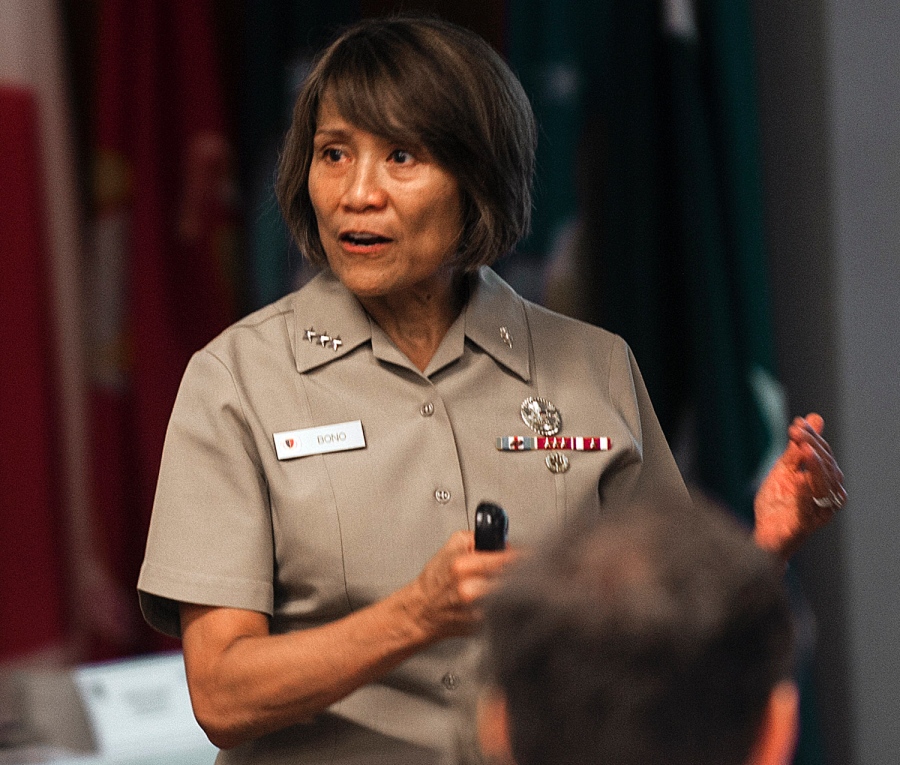
Military health care is seven months from rolling out “historic” reforms to improve patient access and quality of care, to streamline health operations across Army, Navy and Air Force, and to better integrate that direct care system with networks of private-sector providers supporting Tricare insurance beneficiaries, said Vice Adm. Raquel Bono, director of the Defense Health Agency (DHA).
Read the Article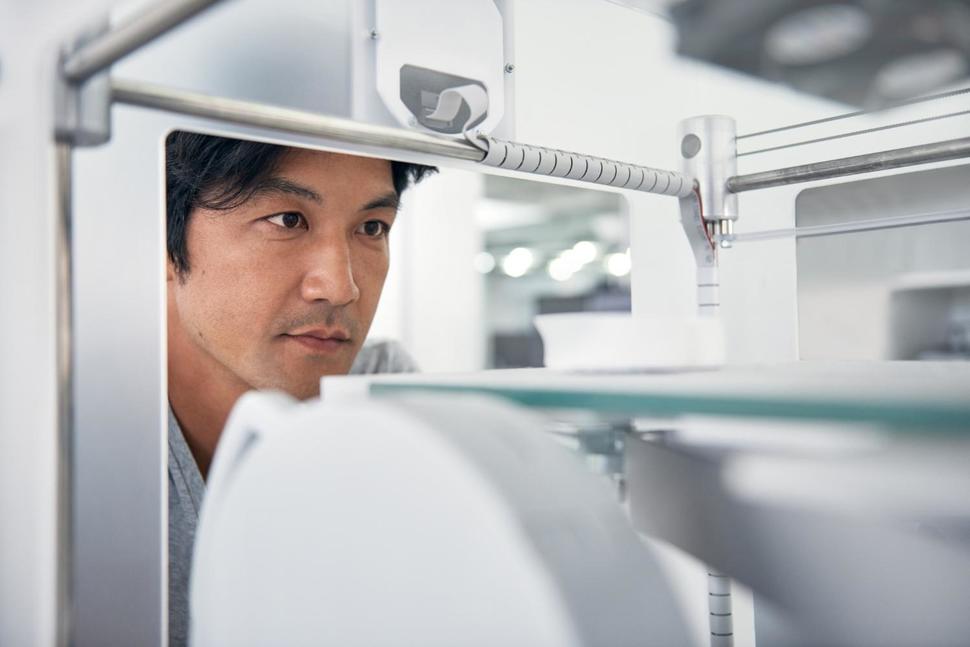
These days, 3-D printing can be used to make just about anything – from guns to eyeglasses.
In place of the ink used by their 2-D counterparts, 3-D printers take materials ranging from plastics and ceramics to metals and, layer by layer, create three-dimensional objects based on digital files. Also called additive manufacturing, the process supports a high degree of customization, making it particularly attractive for creating individualized solutions to problems – including those in health care.
Read the Article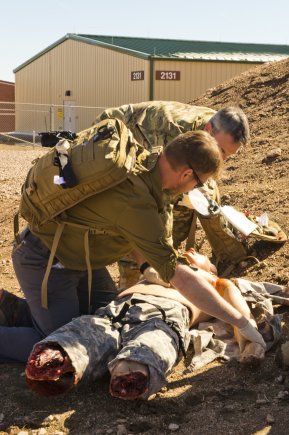
Special operations medics are among the best trained and most proficient in the world. But, to maintain a high level of readiness, they must practice their skills in controlled environments under the mentorship of senior medical professionals.
As a 10th Special Forces Group (Airborne) battalion surgeon, Maj. Hunter Winegarner assists in the planning and execution of medical training across the Group. On April 6th, Winegarner led a group of medics through some of the most realistic training Fort Carson has to offer.
Read the Article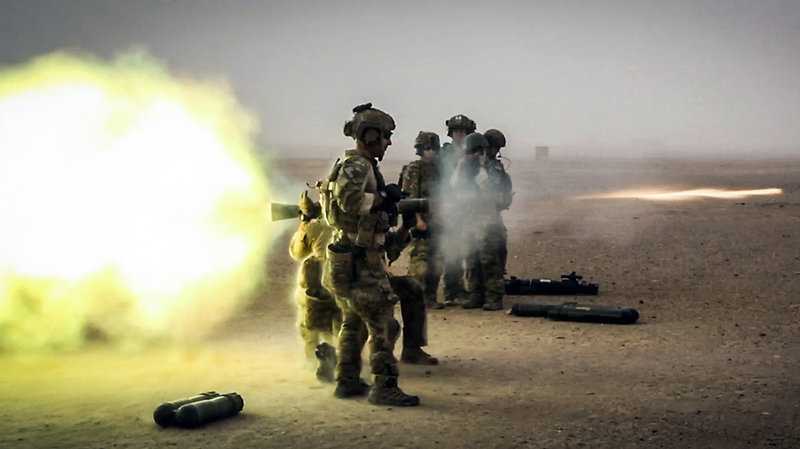
The U.S. military is trying to figure out whether certain heavy weapons are putting U.S. troops in danger.
The concern centers on the possibility of brain injuries from shoulder-fired weapons like the Carl Gustaf, a recoilless rifle that resembles a bazooka and is powerful enough to blow up a tank.
Read the Article
The U.S. Army convinced me to become a doctor, and for that (and the opportunity to serve my country) I am eternally grateful.
But I feel the need to point out what I see as a backward way of training military medical personnel —namely the continued use of live animals in combat medicine courses.
Read the ArticleMarch 2017
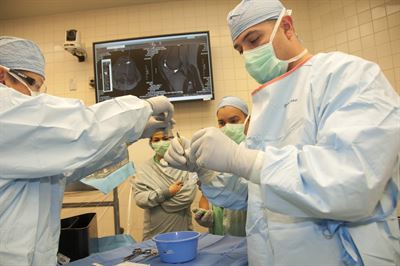
Readiness is the priority of the Military Health System, the surgeons general of the Army, Navy and Air Force told the Senate Appropriations Committee’s defense subcommittee today.
Army Lt. Gen. (Dr.) Nadja Y. West, Navy Vice Adm. (Dr.) C. Forrest Faison III and Air Force Lt. Gen. (Dr.) Mark A. Ediger testified at a hearing on defense health.
Read the Article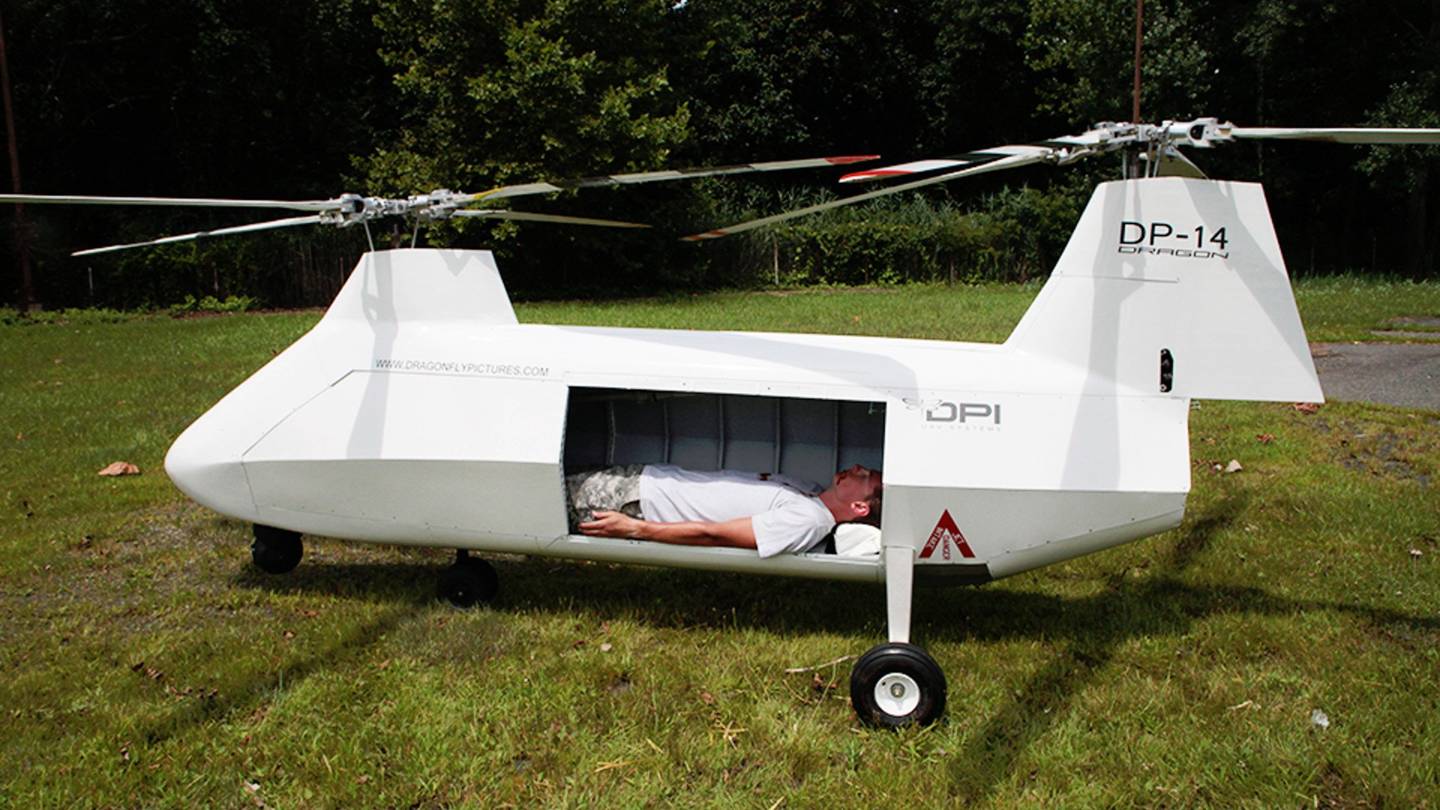
The U.S. Army thinks a small, tandem-rotor drone could be rushing injured troops from the battlefield to field hospitals in the near future. Dragonfly Pictures, Inc. (DPI) DP-14 Hawk would be the latest way to getting casualties quickly out of harm’s way and into the care of medical professionals.
Read the Article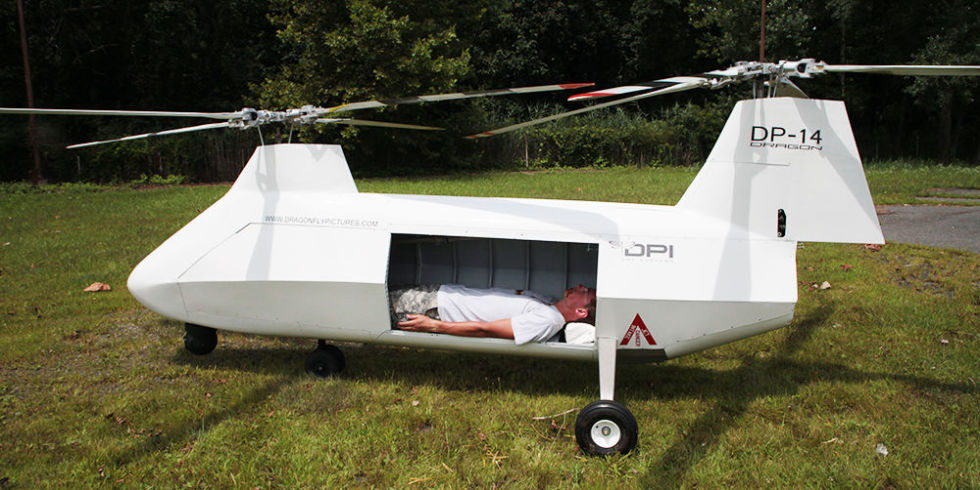
Military drones aren't just for attack or surveillance. If the U.S. Army has its way, its medics could soon call on unmanned helicopters to evacuate the wounded to nearby aid stations.
Read the Article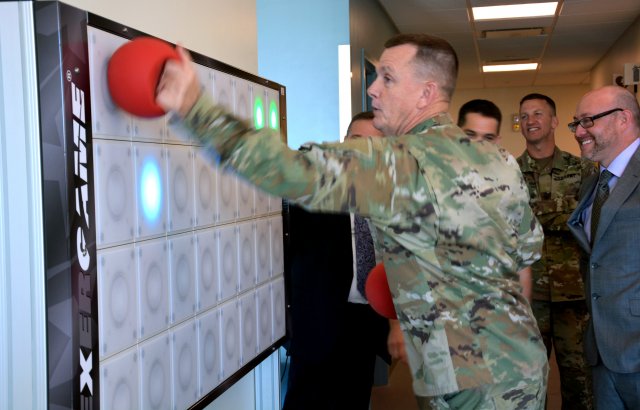
Since 2000, more than 339,000 service members have been diagnosed with the signature wound from the wars in Iraq and in Afghanistan: traumatic brain injury (TBI).
Called the "invisible wound of war," traumatic brain injuries are hard to diagnose and difficult to treat because of the disease's symptom diversity that can include anything from depression and anxiety to balance and memory issues.
Read the Article
Brooke Army Medical Center has been selected to be the Army's first virtual medical center, Army Surgeon General Lt. Gen. Nadja Y. West announced last week.
"We are tremendously proud and excited about this opportunity to expand the Army's virtual health capabilities," said BAMC Commander Brig. Gen. Jeffrey Johnson. "This is an amazing opportunity for BAMC to leverage state-of-the-art technology to support military medical facilities and patients around the world and for our medical professionals to benefit from a readiness standpoint."
Read the Article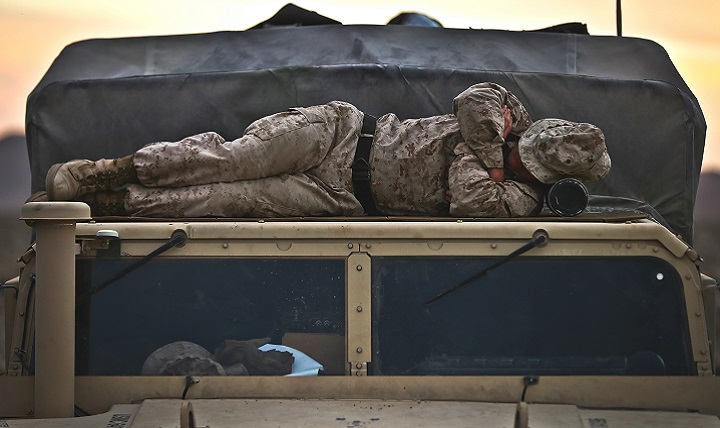
The quality of soldiers' sleep has a direct bearing on readiness, according to an Army researcher.
Despite the medically proven linkage between sleep and readiness, all too often sleep is viewed as a luxury by some soldiers, Army Col. (Dr.) Vincent Mysliwiec said.
Read the Article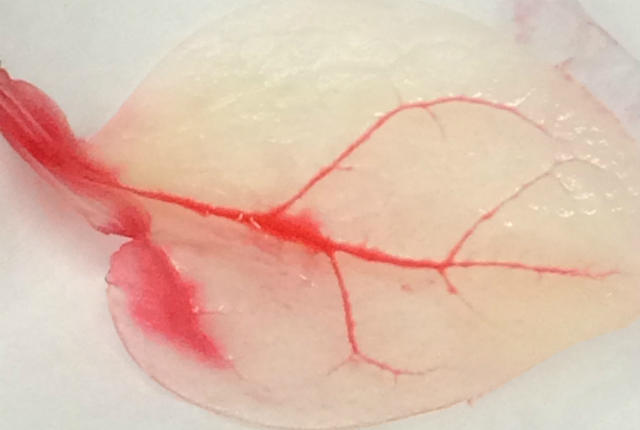
Don't let that headline give you any crazy ideas: this isn’t about some kind of horror-inspired Frankensalad. Scientists are simply capitalizing on plants’ robust natural vein structure, which may someday let them grow human heart tissue for transplant. The researchers published their findings online in the journal Biomaterials.
Read the Article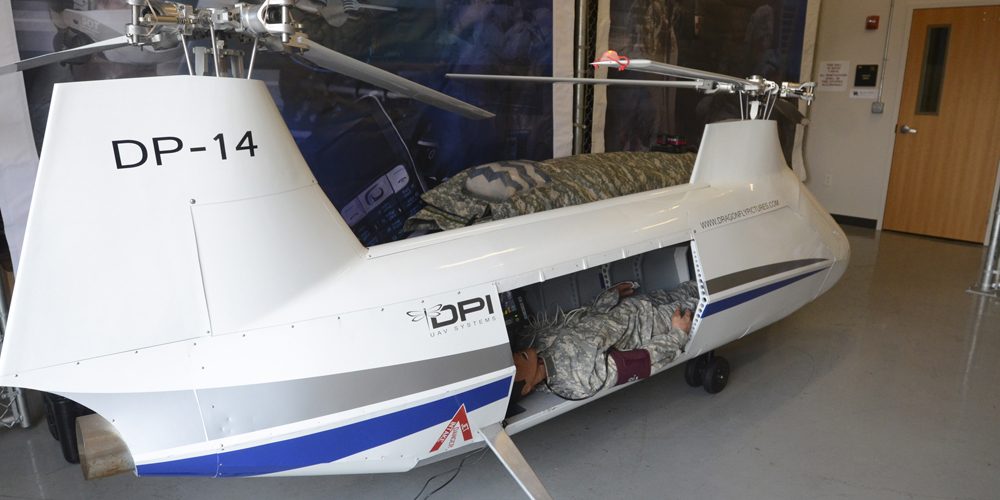
Here is an interesting innovation and concept, using a drone to evacuate wounded off the battlefield. The DP14 Hawk is similar to a miniature CH-47 Chinook helicopter, which reportedly can carry up to 430 pounds for about 2.4 hours.
Read the Article
Dragonfly Pictures Inc.’s DP14 Hawk, a dual-rotor unmanned aerial system, could play a role in a U.S. Army effort to one day use drones to evacuate wounded soldiers from the battlefield.
The DP14 Hawk, which resembles a miniature CH-47 Chinook helicopter, can carry 430 pounds in its six-foot by 20-inch cargo space for about 2.4 hours.
Read the Article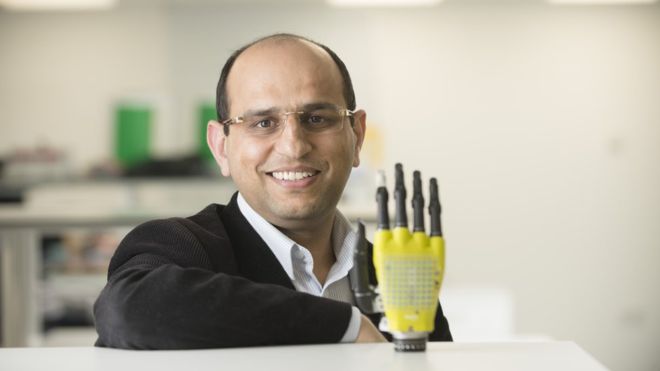
Researchers had already created an 'electronic skin' for prosthetic hands made with new super-material graphene.
The new skin was much more sensitive to touch but needed a power source to operate its sensors.
Read the Article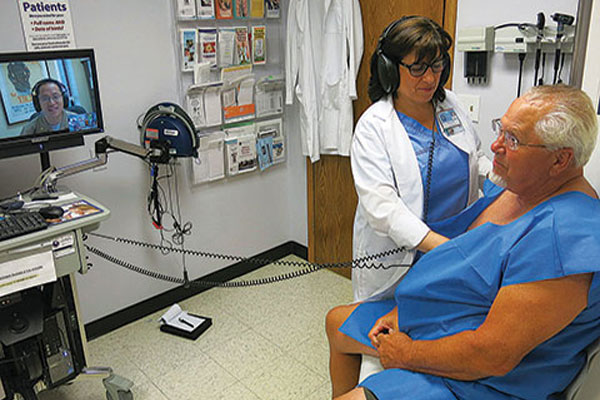
The Veterans Affairs Department is researching how to improve the quality of care for veterans in rural areas with serious or chronic conditions.
A telehealth collaborative care study announced in January is surveying about 800 veterans in rural areas in Texas and Georgia who have been diagnosed with human immunodeficiency virus, or HIV. Led by Dr. Michael Ohl, the survey focuses on regions where VA has an HIV specialty clinic.
Read the Article
In a conference room of the U.S. Army Medical Research and Materiel Command (USAMRMC) headquarters at Fort Detrick, Maryland, in January 2017, leaders and staffers listened intently as Gen. David Perkins, commander of the U.S. Army Training and Doctrine Command, outlined the future of the Army—the multidomain battlefield.
Read the Article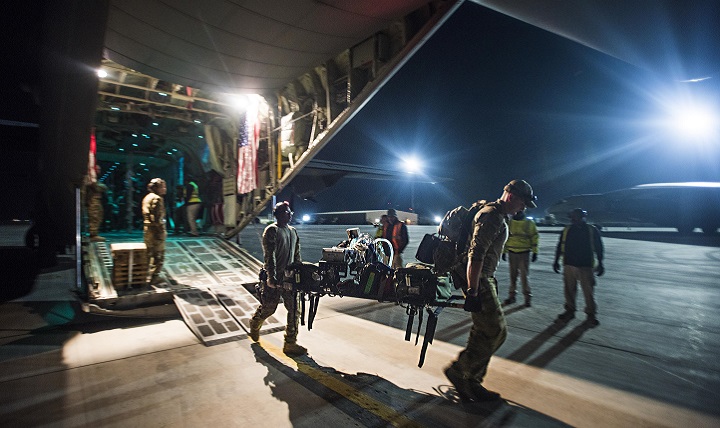
An intensive care unit is usually a sterile environment – white hospital walls, pristine floors, bright fluorescent lights and dozens of medical professionals.
The intensive care unit that the 455th Aeromedical Evacuation Squadron operates out of the back of a C-130J Hercules is a different scene entirely.
Read the Article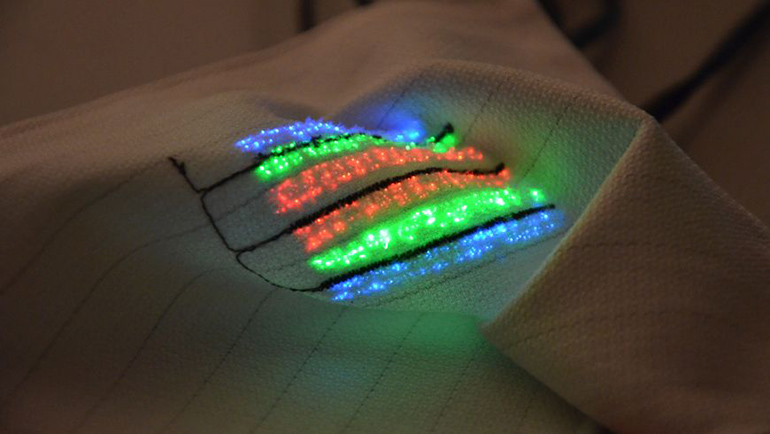
At Empa (Swiss Federal Laboratories for Materials Science and Technology), researchers have developed a way of integrating optic fibers into clothing and using this technology to detect a person’s heart rate. The polymer fibers are highly flexible, keeping the integrated clothing still soft and comfortable.
Read the Article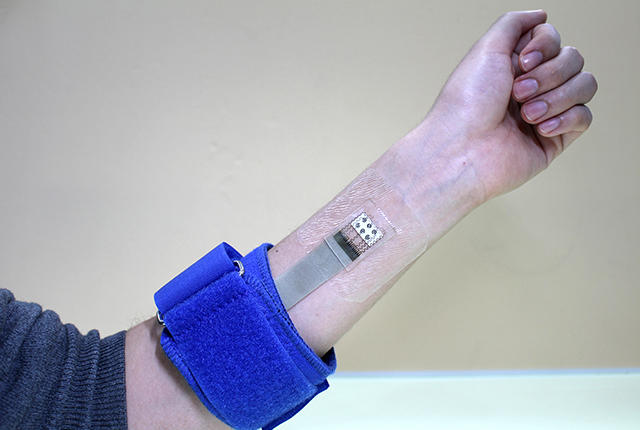
People with diabetes need to closely monitor their blood glucose levels multiple times every day, usually using a device that pricks their finger for a blood test to assess whether they need insulin shots or other drugs. Since blood collection and shots can be painful, not all patients do it as regularly as they need to—which can lead to dangerous fluctuations in their blood glucose levels.
Read the Article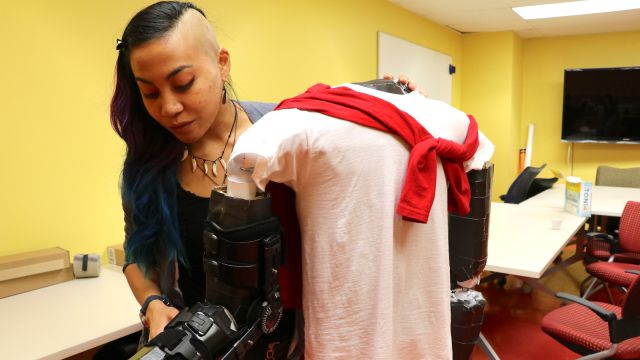
There weren’t many role models for Sam Huynh when she was growing up in Belen, New Mexico. In fact, except for a howling freight train and the surrounding desert mountains, there wasn’t much of anything in the town of 7,000 people.
Read the Article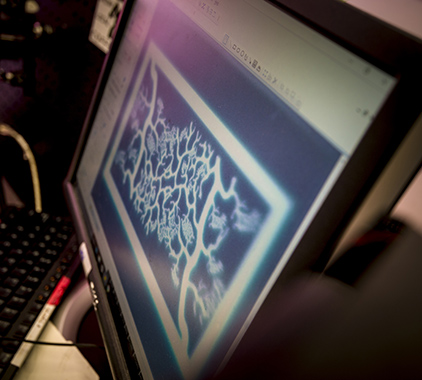
Creating living tissues in the lab requires closely mimicking their natural internal structure. In addition, capillary networks that carry oxygen and nutrients are critical to successfully sustaining the life of cells in the integrated tissue environment. Researchers at University of California, San Diego have developed a method of printing tiny (4 millimeters × 5 millimeters, 600 micrometers thick), pre-designed vascular networks that turn into vessel-like structures made of the same cells as natural blood vessels.
Read the Article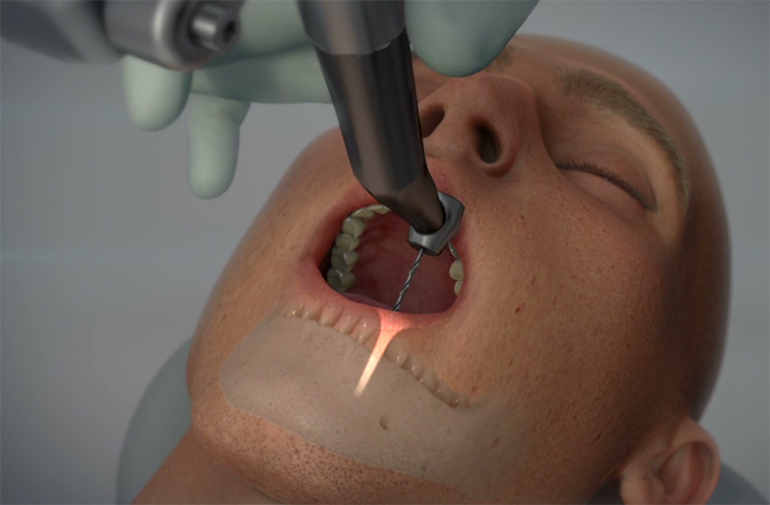
Neocis, a company based in Miami, Florida, just announced winning FDA clearance to introduce Yomi, the first robotically assisted dental surgical system. Yomi’s software is used to plan a procedure based on a patient’s CT scan. During the procedure, the system continuously tracks the patient and controls the direction of the drill as the clinician advances it into tissue. This is supposed to guarantee that the physician doesn’t stray away from the correct location, depth, and orientation of the plan, while still controlling the actual drill delivery.
Read the Article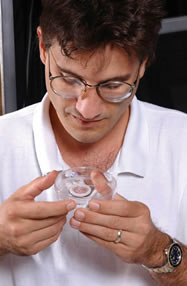
A University of Florida scientist has grown a living “brain” that can fly a simulated plane, giving scientists a novel way to observe how brain cells function as a network.
The “brain” — a collection of 25,000 living neurons, or nerve cells, taken from a rat’s brain and cultured inside a glass dish — gives scientists a unique real-time window into the brain at the cellular level. By watching the brain cells interact, scientists hope to understand what causes neural disorders such as epilepsy and to determine noninvasive ways to intervene.
Read the Article
Scientists at the Max Planck Institute for Intelligent Systems in Stuttgart, Germany and Harbin Institute of Technology in Shenzhen, China have come up with a tiny self-powered propulsion system for devices small enough to move through various vessels inside our bodies. The technique does not generate any bubbles to push microscopic objects, but instead works similar to a jet engine that pushes air through itself to generate thrust.
Read the Article
The U.S. Army wants to use mHealth to help its members control and improve management of type 2 diabetes.
The U.S. Army Medical Research and Material Command’s Telemedicine & Advanced Technology Research Center (TATRC) is collaborating with Clemson University on a year-long project this year to test a platform that includes smartphones and tablets, mHealth-enhanced devices like glucometers and even commercial wearables like the Fitbit.
Read the Article
Metamaterials are a new class of finely engineered surfaces that perform tasks that defy nature. The newly developed material pushes the boundaries of metamaterials, although they have already shown amazing results with light manipulation. This has for example allowed scientists to create a real version of Harry Potter’s invisibility cloak.
The research team from the Universities of Bristol and Sussex have now demonstrated that the materials can also work with sound waves. This new development could potentially transform personal audio and medical imaging.
Read the Article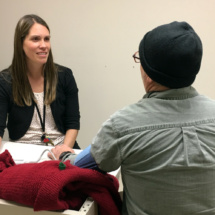
CLEMSON — The Clemson University public health sciences department was awarded a contract of up to $1.2 million from the Department of Defense to study the use of mobile technology and tailored health messaging to educate, assist and motivate patients to become more active in management of their type 2 diabetes. Researchers are collaborating with the U.S. Army Medical Research and Material Command’s Telemedicine and Advanced Technology Research Center on the project.
Read the Article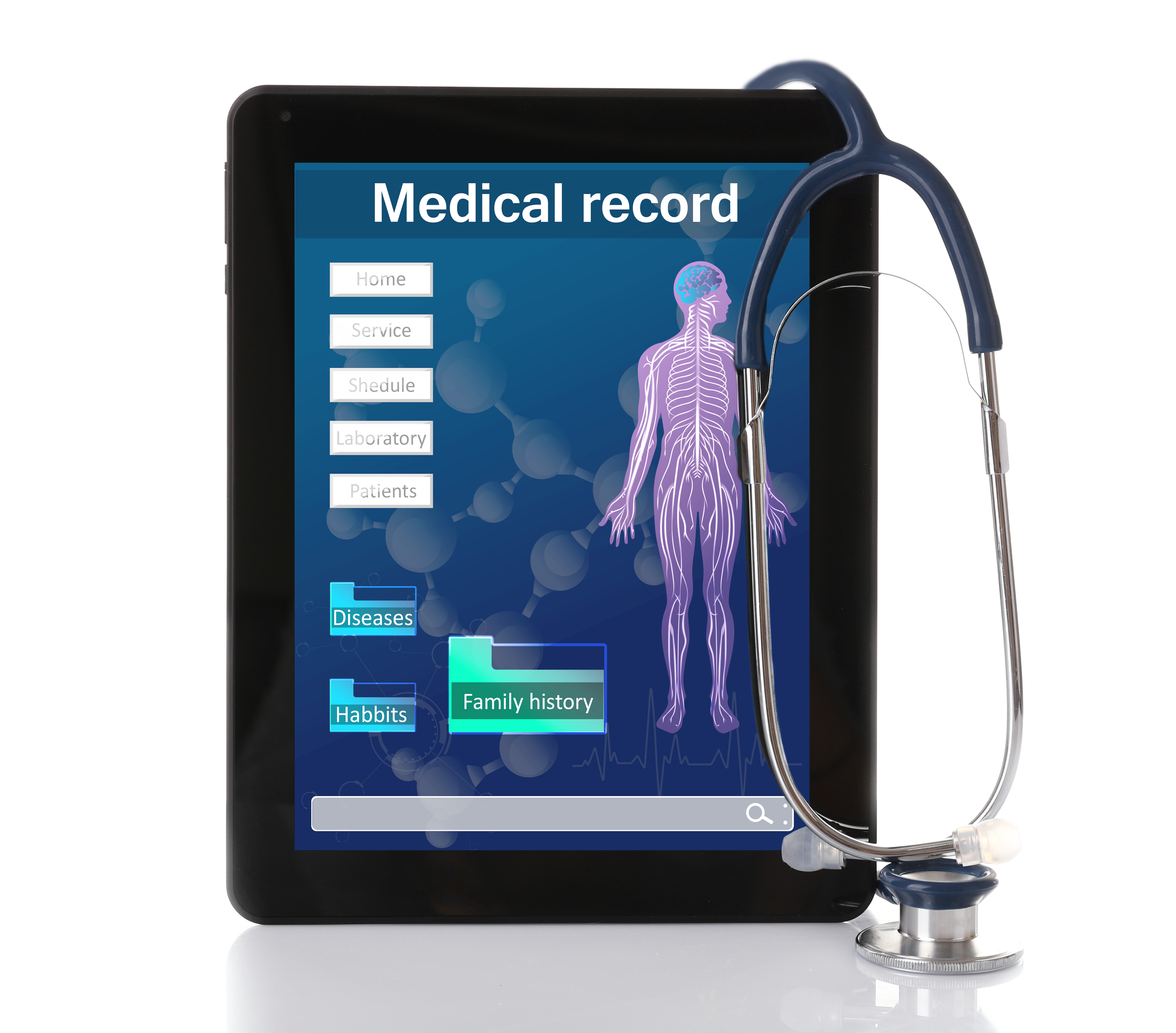
The Defense Department’s newly modernized electronic health record system was recognized as successful after a weeklong deployment at Fairchild Air Force Base in Spokane, Washington, officials said Feb. 15.
Fairchild’s 92nd Medical Group became the first military hospital or clinic to use MHS GENESIS, a single, integrated electronic inpatient and outpatient health record that transforms health care delivery within DOD’s Military Health System, officials said.
Read the Article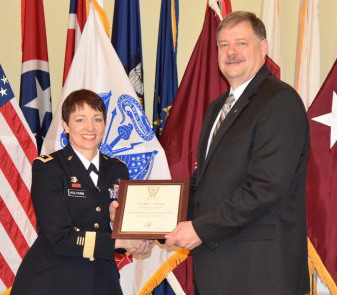
The U.S. Army Medical Research and Materiel Command celebrated the induction of Dr. George V. Ludwig into the Senior Executive Service at Fort Detrick, Maryland, Feb. 21.
Ludwig is now a member of a very prestigious rank of civil service. According to the U.S. Office of Personnel Management, the Senior Executive Service lead America's workforce. These leaders possess well-honed executive skills and share a broad perspective on government and a public service commitment that is grounded in the Constitution.
Read the Article
We learned a bit more about the Feb. 7 launch of MHS Genesis during a HIMSS session Tuesday. Crusty seen-it-all pros that we are, we couldn’t help but be impressed by how jubilant senior DoD health officials seem to be about their new Cerner machine. (Their old system kind of stank). Providers at Fairchild Airbase in Washington state, the first implementation site, have been enthusiastic about the usability and efficiency of the EHR, says project director Stacy Cummings. “Within a day of the implementation, the providers were saying, ‘I finished my documentation at the end of the day,’ instead of having to take home paperwork,” Cummings said.
Read the Article
It’s been two weeks since the Defense Health Agency started up its electronic health records system, and Vice Adm. Raquel Bono is thrilled.
“I’m happy to say that the deployment at Fairchild Air Force Base is incredible,” she said, speaking at a media session during the 2017 HIMSS conference in Orlando, Florida.
Read the Article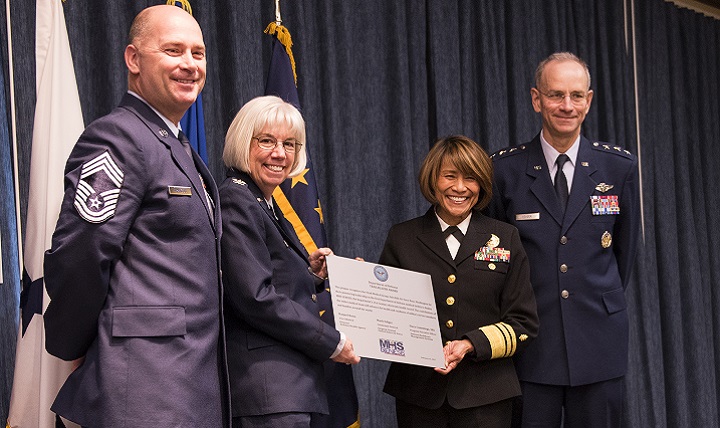
Patients and providers at Fairchild Air Force Base, Washington, were the first to adopt MHS GENESIS as the new electronic health record. Deployed by the Military Health System on Feb. 7, 2017, officials touted it as an open, flexible and easily adaptable medical and dental electronic health record that gives both providers and patients access to information, from the point of injury to care in military hospitals and clinics or in the private sector.
Read the Article
After one week of deployment, Defense officials are claiming success for DoD’s new electronic health record system. The electronic health record, MHS Genesis, went live last week at Fairchild Air Force Base in Spokane, Washington. Stacy Cummings, program executive officer of Defense Healthcare Management Systems, said initial feedback from healthcare providers was positive.
Read the Article
The back-end work to integrate the Cerner electronic health record into Department of Defense networks and systems represents a new direction in Pentagon IT culture and practice, according to CIO Terry Halvorsen.
Read the Article
WASHINGTON — The Defense Department’s newly modernized electronic health record system was recognized as successful after a week-long deployment at Fairchild Air Force Base in Spokane, Washington, officials there said Feb. 15, 2017.
Fairchild’s 92nd Medical Group became the first military hospital or clinic to use MHS GENESIS, a single, integrated electronic inpatient and outpatient health record that transforms health care delivery within DoD’s Military Health System, officials said.
Read the Article
In collaboration with ECRI, a new report outlines best practices, suggesting that copy-and-paste data should be easily identifiable, with its original source easy to discern.
The National Institute of Standards and Technology's recent study, "Examining the Copy and Paste Function in the Use of Electronic Health Records" aims to shed light on the widely-used but controversial copy and paste functionality in EHRs, exploring how care providers use it and seeking ways to ensure it maintains patient safety.
Read the Article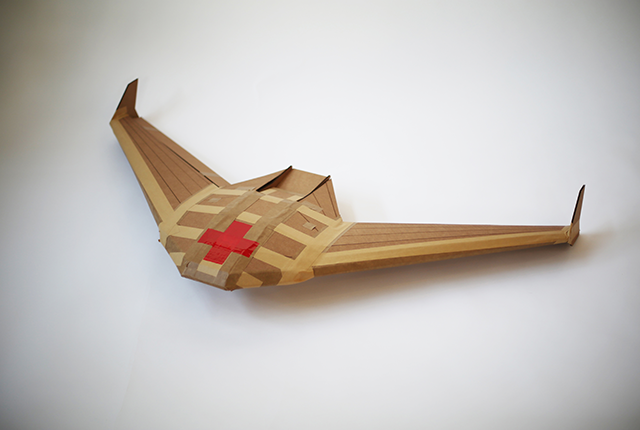
The U.S. military has started playing with paper airplanes. DARPA, the Defense Department’s technology lab, is funding research into inexpensive, biodegradable cardboard drones that can deliver supplies and then disappear, as the MIT Technology Review reports.
Read the Article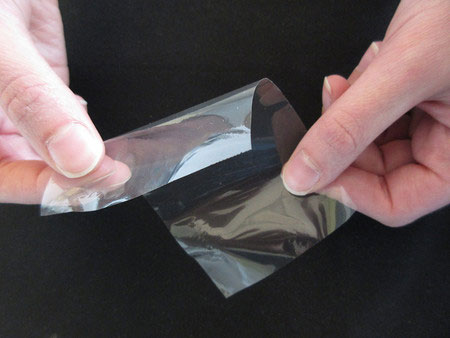
It is possible to graft the material onto prosthetic limbs, thereby restoring temperature sensing in amputees. The material can also be attached to first aid bandages. This will alert health professionals of a temperature increase in wounds, which is often a sign of infection.
A team led by Caltech’s Chiara Daraio created a material that showed an electrical response to temperature changes in the lab, while they were creating synthetic woods in a petri dish. Further investigation revealed that the component responsible for the sensitivity to temperature was pectin, which is a long chain molecule that is found in plant cell walls.
Read the Article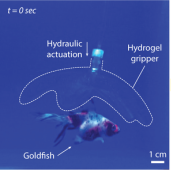
MIT’s latest robot looks a bit like one of those claw machines you find at the front of an arcade, only instead of metal, the claws are made of a clear, membranous substance. And instead of stuffed Minion dolls, they pick up live fish. But other than that, the principles are pretty similar.
Read the Article
FALLS CHURCH, Va. — Medical experts say there are plenty of things people can do to ensure a healthy heart, including quitting smoking and not drinking too much. Heart disease, heart attack, and stroke are just some of the consequences of not taking care of your heart.
Read the Article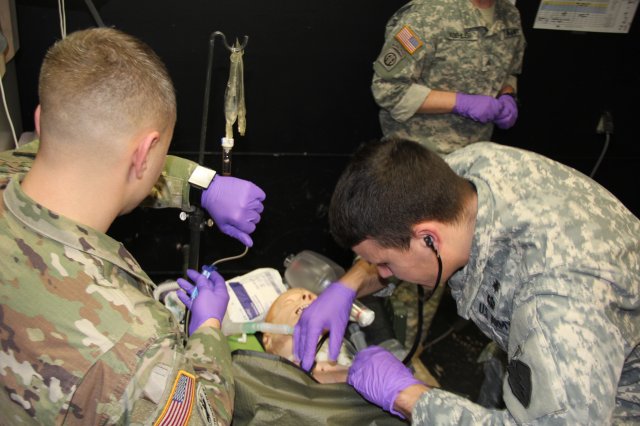
FORT WAINWRIGHT, Alaska - The nation's current deployed operational environment is evolving and so must Army medic training.
Medics from Medical Department Activity-Alaska, Madigan Army Medical Center, out of Joint Base Lewis-McChord, Washington, and 4th Brigade Combat Team (Airborne), 25th Infantry Division, gathered for a week-long Delayed Evacuation Casualty Management Course to begin the shift in mindset and to build the skills necessary for providing care on the ever-changing battlefield.
Read the Article
On Jan. 10, U.S. Army Medical Research and Materiel Command Small Business Innovation Research and Small Business Technology Transfer performers were honored with the 2016 Tibbetts Award by the Small Business Administration for creating significant economic or social impact through the use of SBIR/STTR funding in a ceremony at the White House.
Read the Article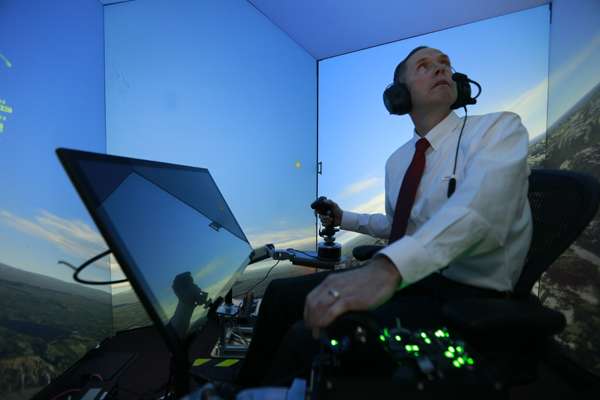
Artificial intelligence (AI) developed by a University of Cincinnati doctoral graduate was recently assessed by subject-matter expert and retired United States Air Force Colonel Gene Lee - who holds extensive aerial combat experience as an instructor and Air Battle Manager with considerable fighter aircraft expertise - in a high-fidelity air combat simulator.
Read the Article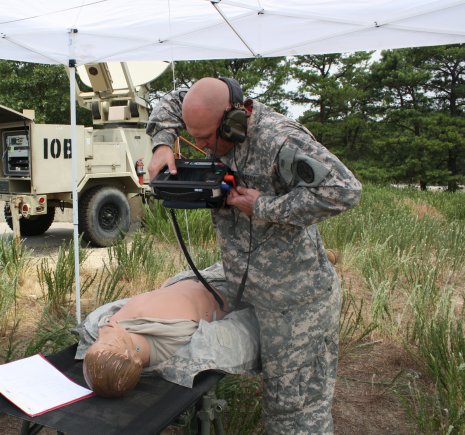
FORT CARSON, Colo. --Army Medicine is harnessing the power of 21st century tools to transform and exponentially improve both capacity and capability; not only for Army Medicine, but for the Total Force as well. They are using virtual healthcare, also known as telemedicine, to connect patients in even the most remote regions of the world with healthcare providers.
Read the Article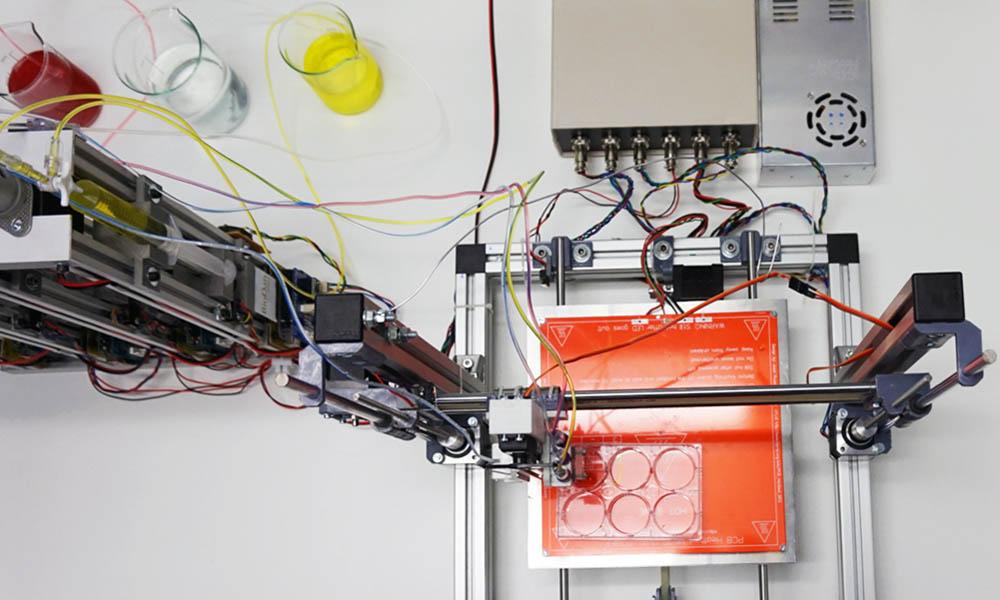
A prototype for a 3D bio printer that can print human skin that is fully functional has been demonstrated by scientists from the Universidad Carlos III de Madrid (UC3M), CIEMAT (Center for Energy, Environmental and Technological Research), Hospital General Universitario Gregorio Marañón. The company BioDan Group collaborated in this study. Although the skin can be used for testing of chemical, cosmetic and pharmaceutical products, or in research, it is also suitable for transplanting to patients.
Read the Article
All skin wounds, whether caused by injury or surgery, eventually leave a scar. Some scars are so small they’re nearly invisible, but many scars are large and ungainly and can even affect the function of the body part where they’re located. Researchers at the University of Pennsylvania’s (UPenn) Perelman School of Medicine, in collaboration with the Plikus Laboratory for Developmental and Regenerative Biology at the University of California, Irvine, have pioneered a method to regenerate the skin after a wound without resulting in any scar tissue, leaving it looking just like unscarred skin. Their results were published recently in the journal Science.
Read the Article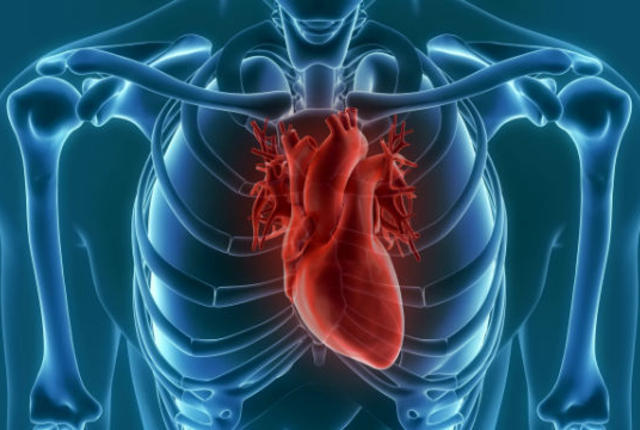
An estimated 5.7 million Americans suffer from heart failure, or an inability to pump a sufficient amount of blood throughout the body. Many submit to drug therapy, with resulting side effects; a small percentage receive heart transplants, though there aren't nearly enough hearts to cover the demand for a healthier organ.
Read the Article
Medical implants like stents, catheters and tubing introduce risk for blood clotting and infection – a perpetual problem for many patients.
Colorado State University engineers offer a potential solution: A specially grown, “superhemophobic” titanium surface that’s extremely repellent to blood. The material could form the basis for surgical implants with lower risk of rejection by the body.
Read the Article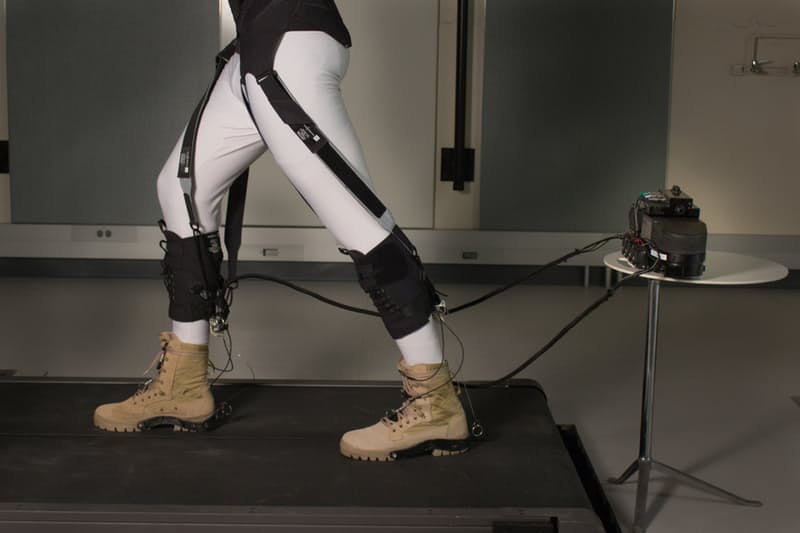
Last year, Harvard’s soft exosuit team provided first proof-of-concept results showing that its wearable robot could lower energy expenditure in healthy people walking with a load on their back. Made of functional textiles, cable-based actuation and a biologically-inspired control system, the exosuit targets specific leg joints – instead of the full leg – and delivers assistance that is synchronized with the wearer’s walking mechanics in individuals ranging from people that carry heavy loads to people that are disabled by stroke or other health complications.
Read the Article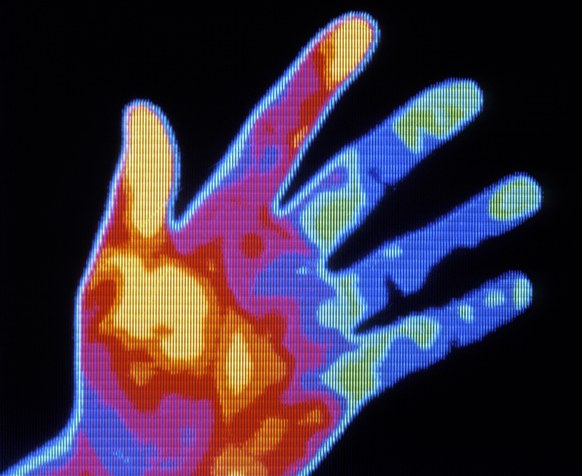
Patient Number Two was born to first-time parents, late 20s, white. The pregnancy was normal and the birth uncomplicated. But after a few months, it became clear something was wrong. The child had ear infection after ear infection and trouble breathing at night.
Read the Article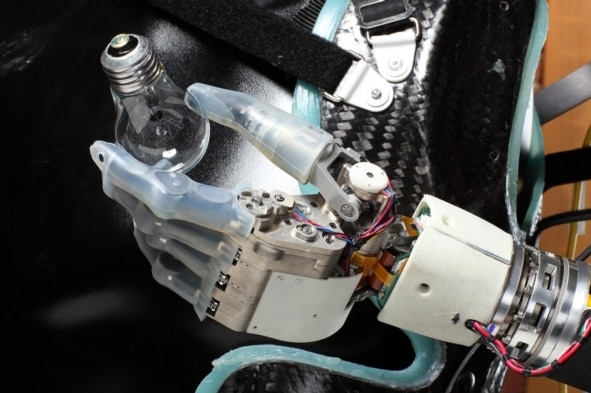
The Pentagon’s research and development division, DARPA—the creative force behind the internet and GPS—retooled itself three years ago to create a new office dedicated to unraveling biology’s engineering secrets. The new Biological Technologies Office (BTO) has a mission to “harness the power of biological systems” and design new defense technology. Over the past year, with a budget of about $296 million, it has been exploring challenges including memory improvement, human–machine symbiosis and speeding up disease detection and response.
Read the Article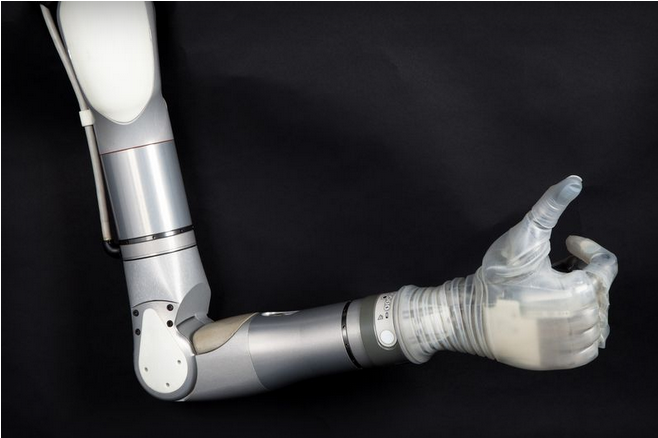
RE2 Robotics, a leading developer of robotic manipulation systems, announced today that the company was awarded a Phase II Small Business Innovation Research (SBIR) grant from the US Army SBIR office and U.S. Army Telemedicine and Advanced Technology Research Center (TATRC) to develop robotic technologies to assist combat medics in the field.
Read the Article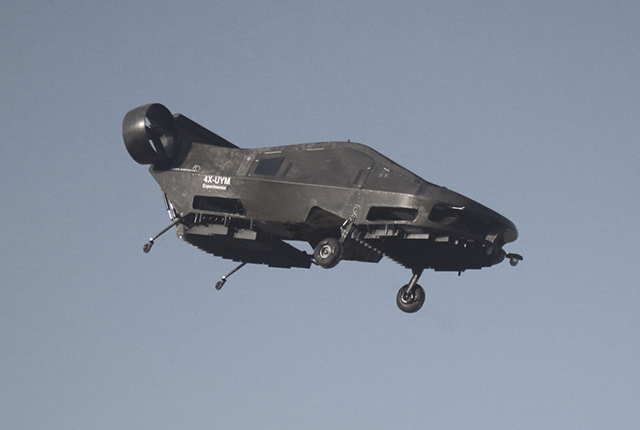
By 2020, we could finally have our flying car. A new drone created by the Israeli firm Urban Aeronautics can carry passengers, ferrying up to 1100 pounds at speeds of up to 115 miles per hour, according to Reuters.
Read the Article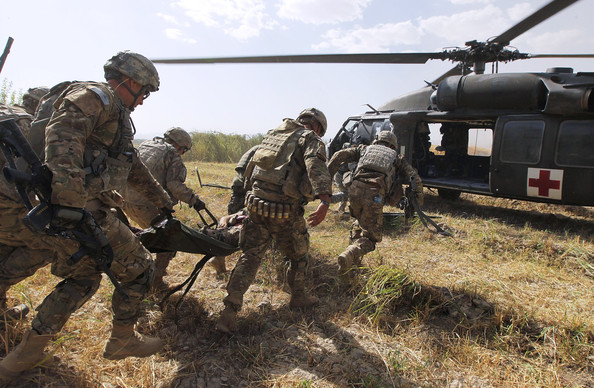
The Army is working on engineering unmanned systems and tactical robots that can both help and evacuate casualties from the battlefield by transporting injured soldiers out of dangerous situations, service officials said.
Read the Article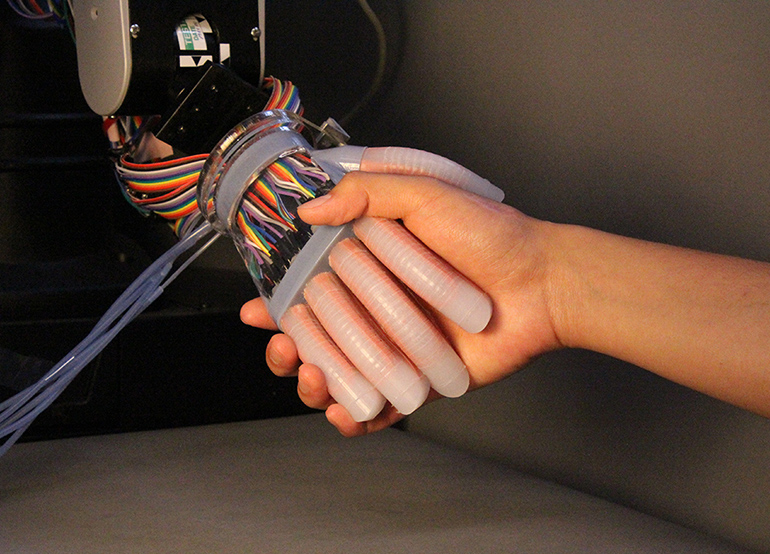
Soft robotic components, powered by liquid flowing in and out of them, have numerous advantages over rigid and motor activated devices. Benefits for prosthetics include their lightness, a more natural feel, and structural simplicity. One limitation, though, has been the difficulty of integrating sensitive sensors into soft and stretchable fingers of robotic hands that would be used to relay the tactile nature of what’s being touched.
Read the Article